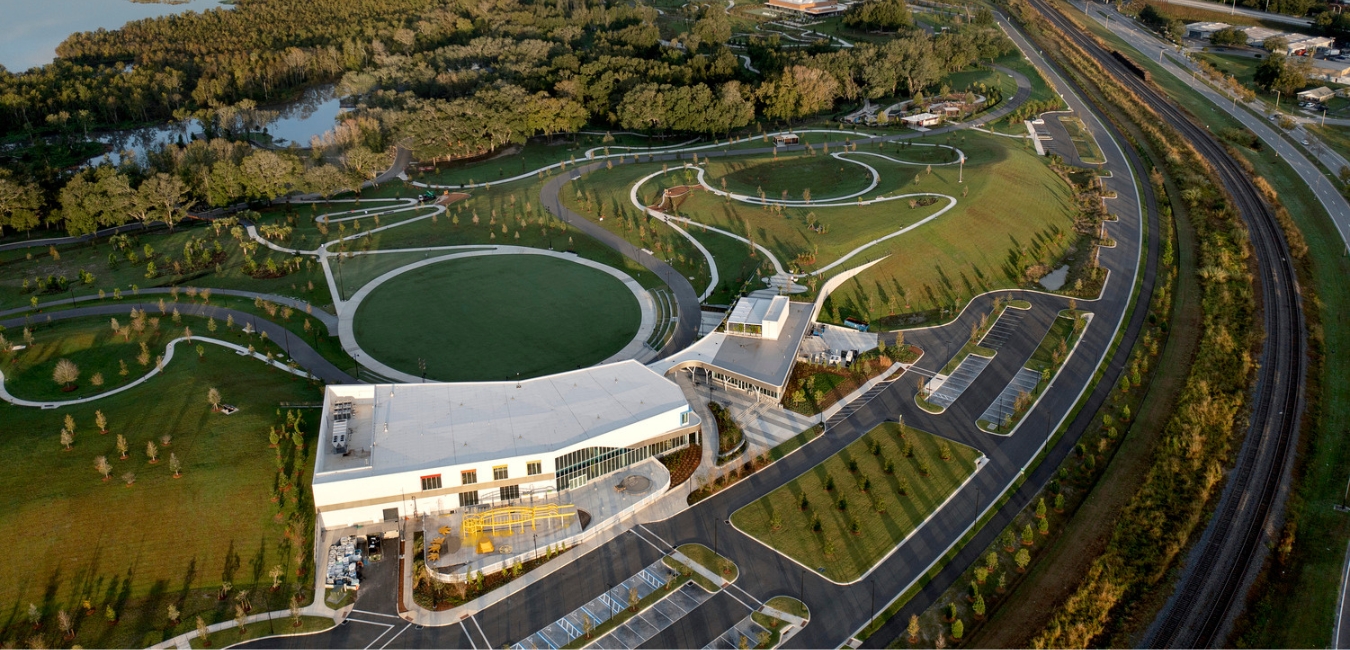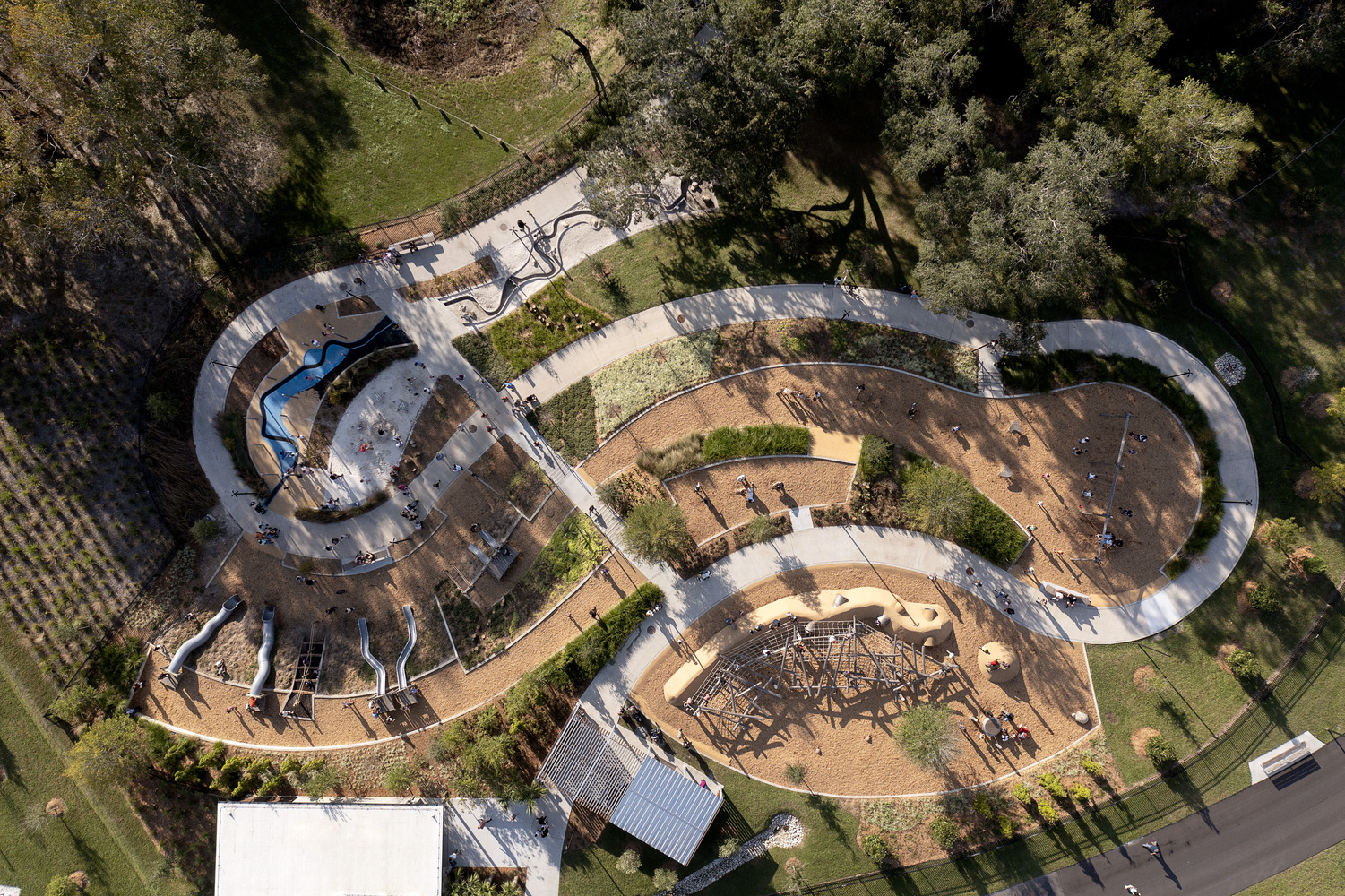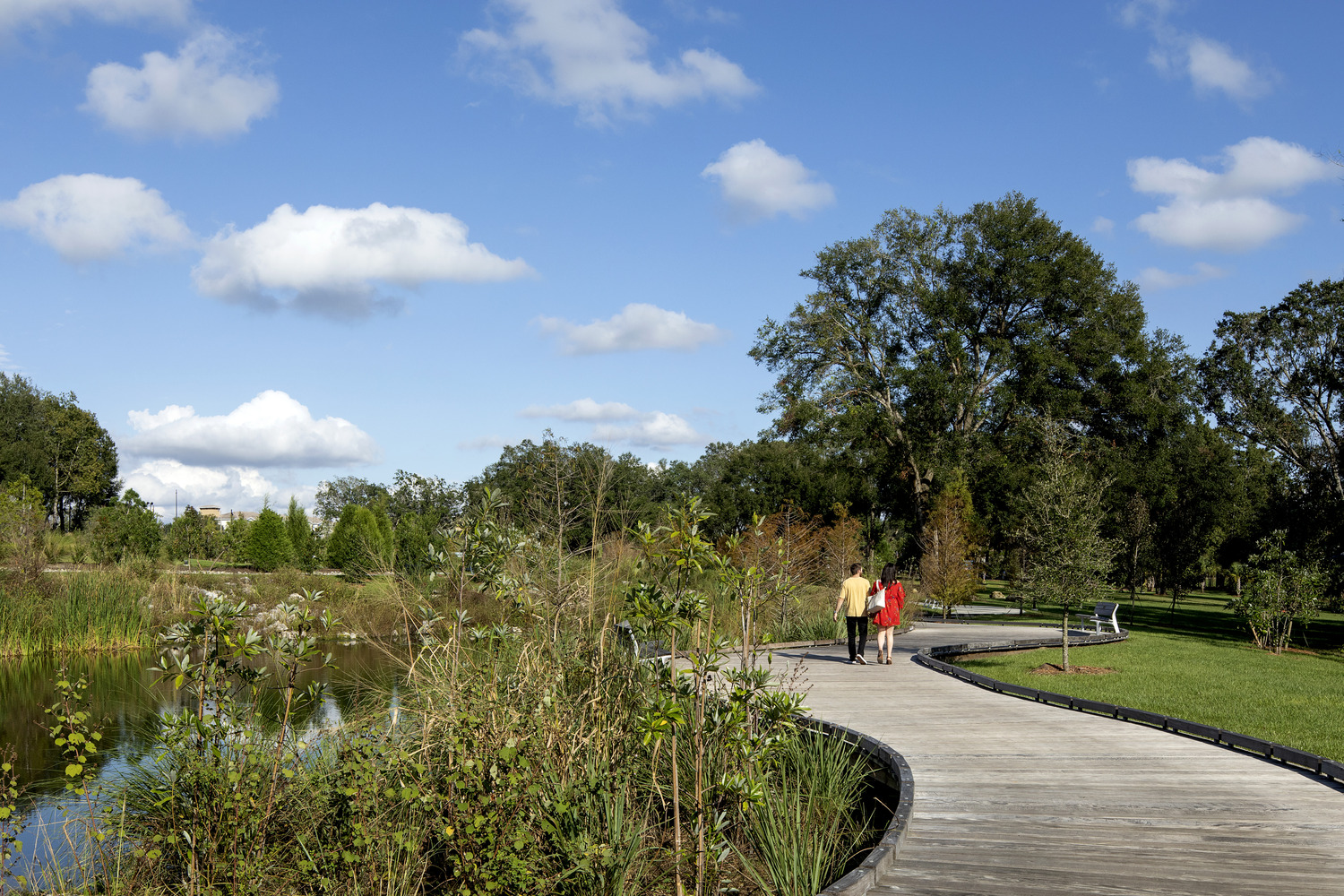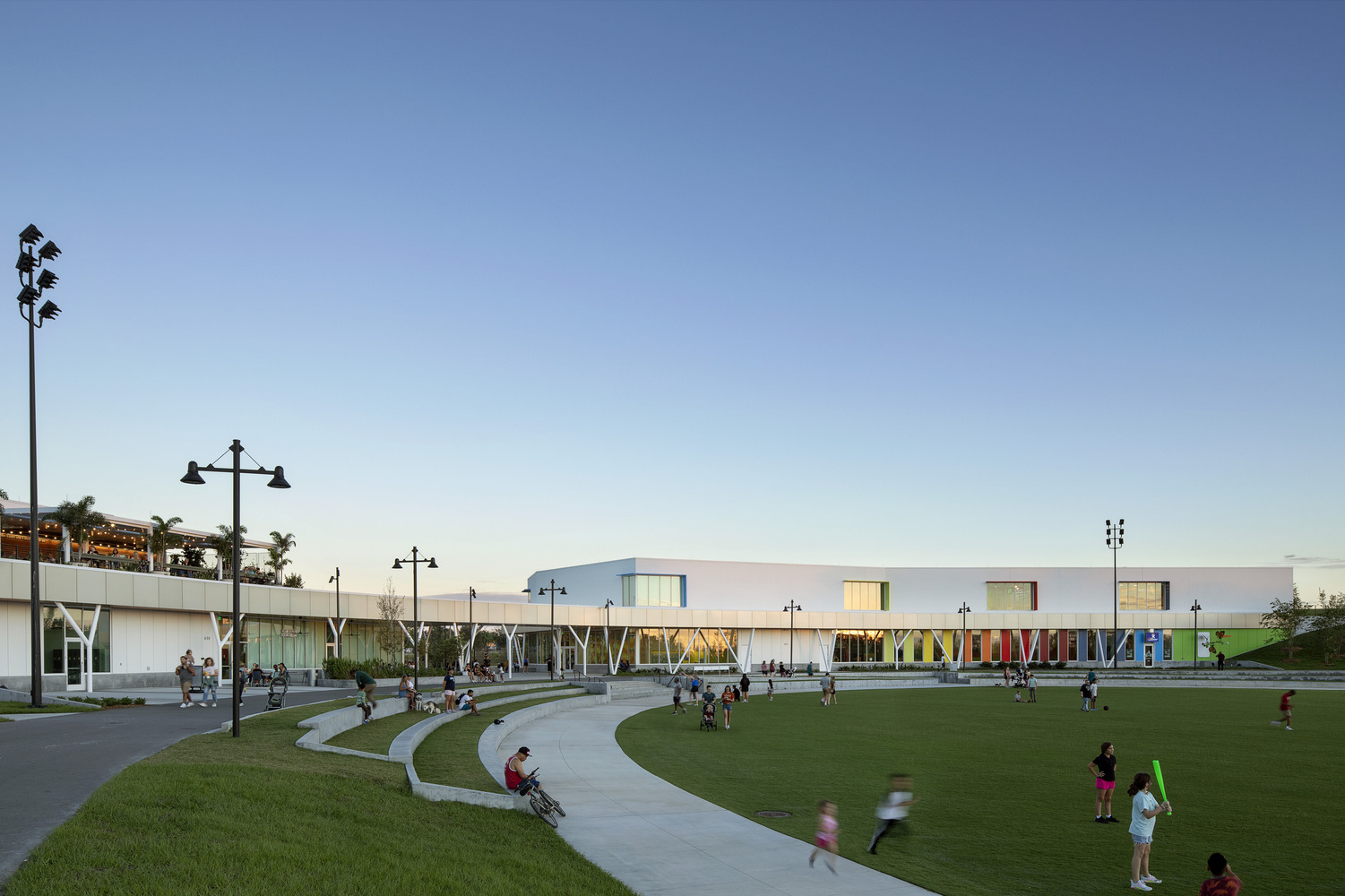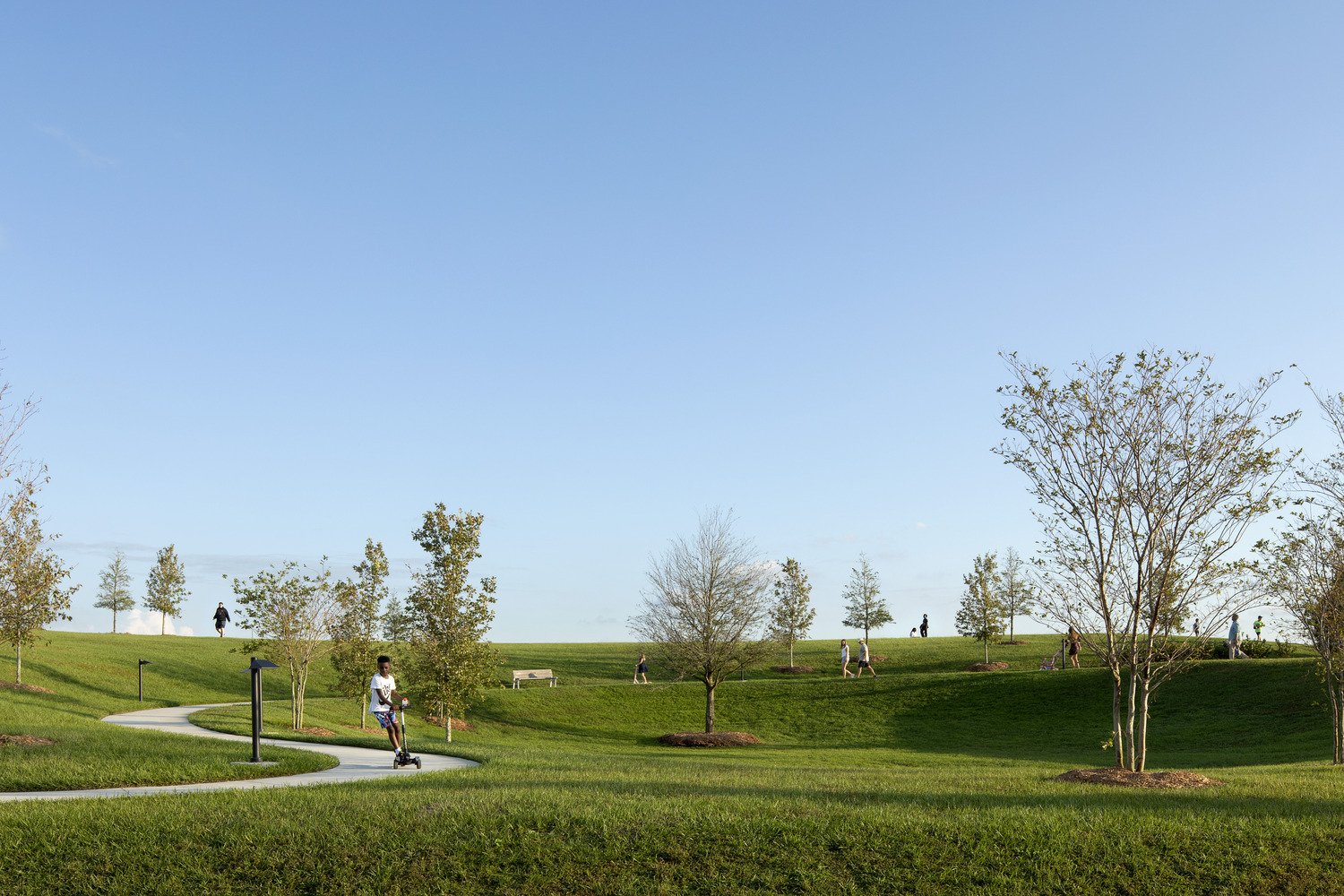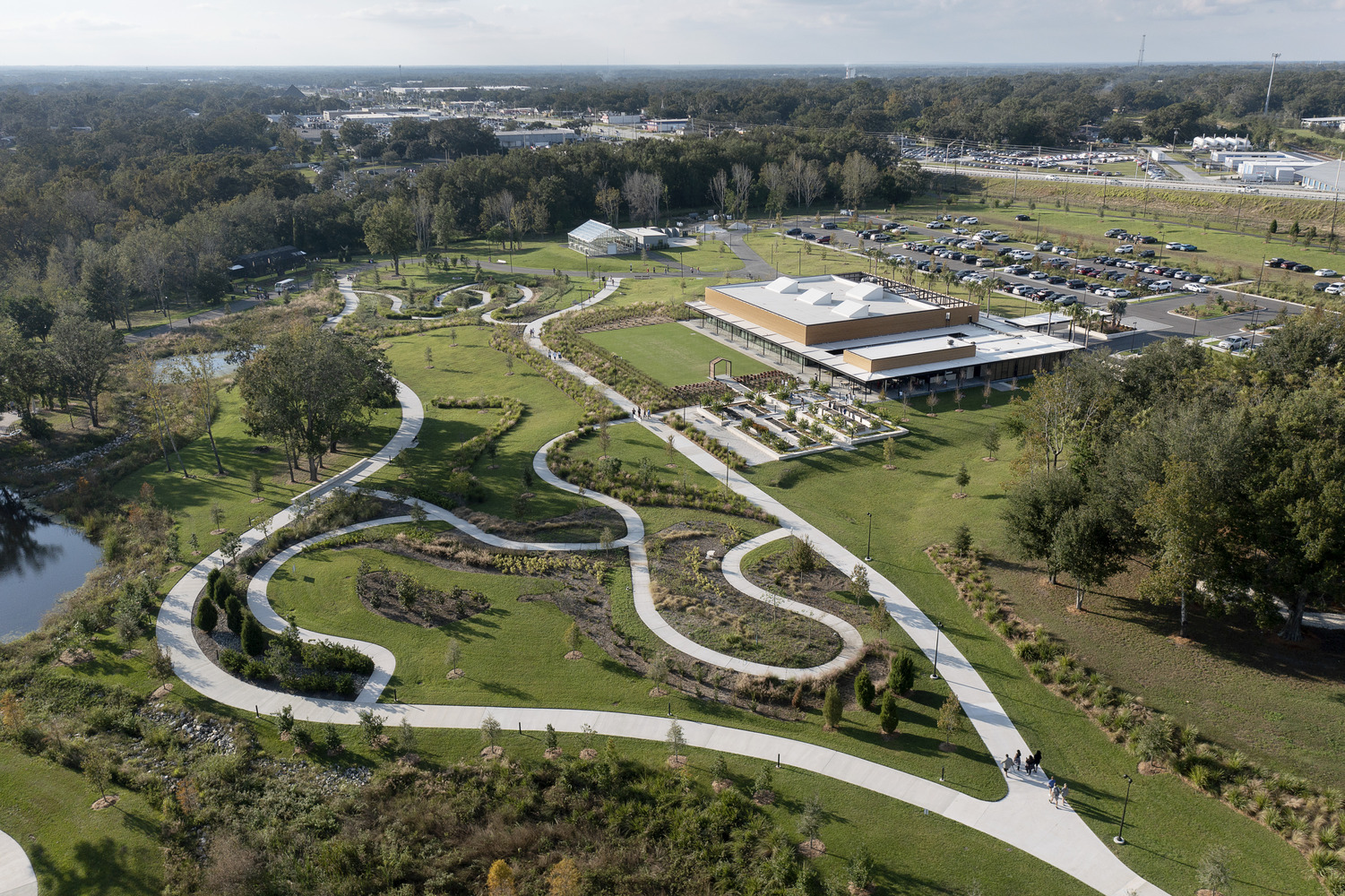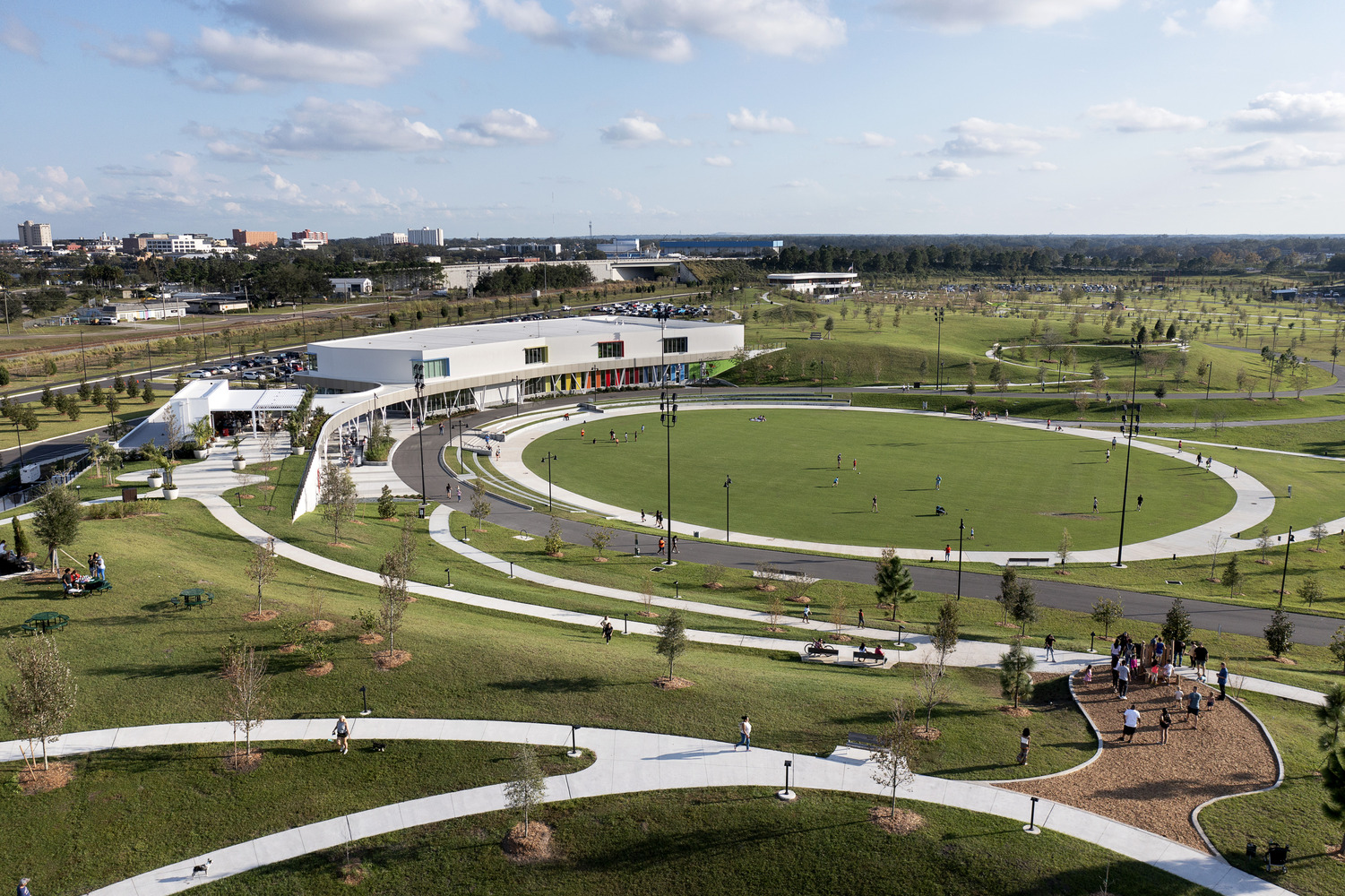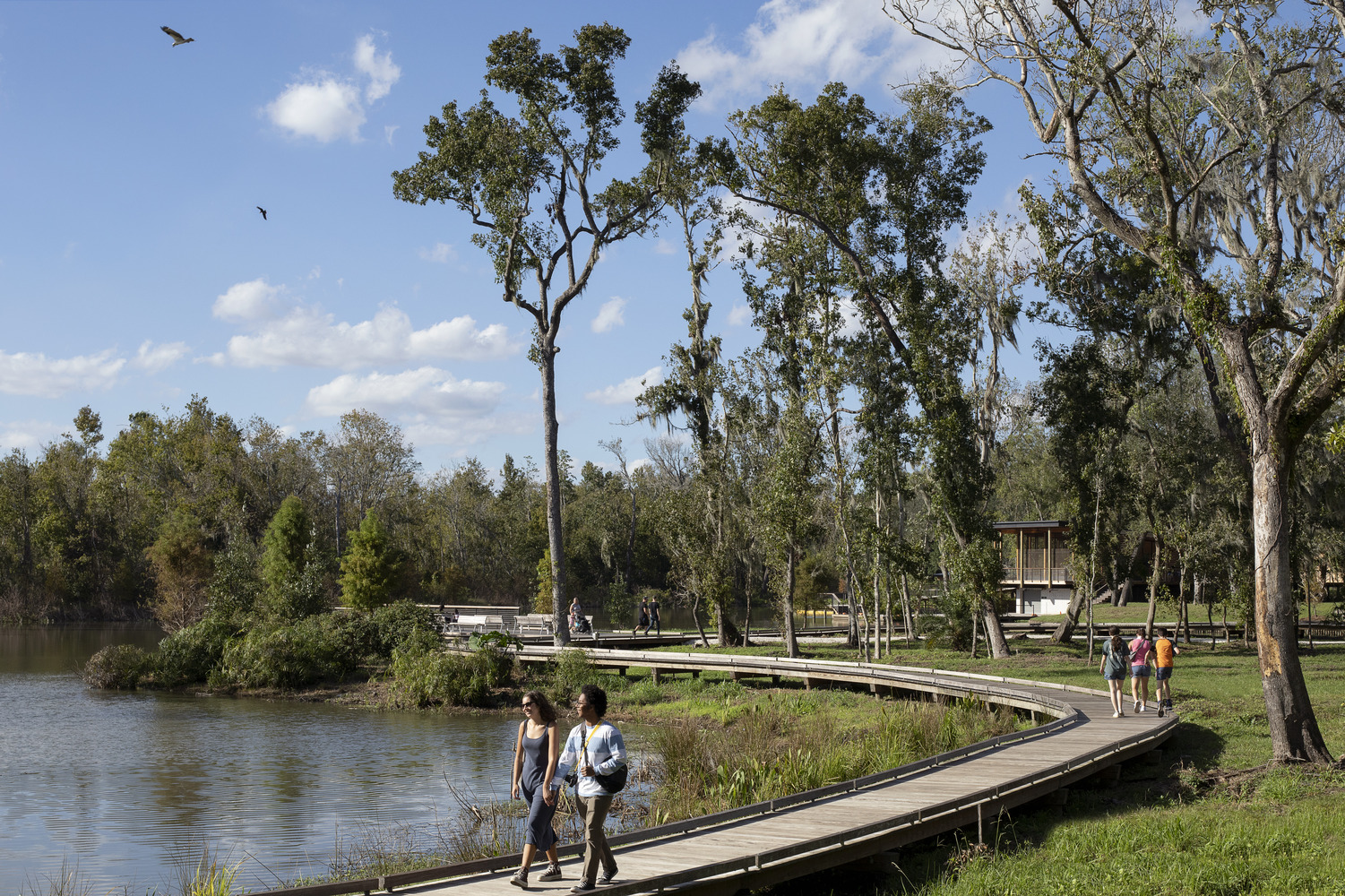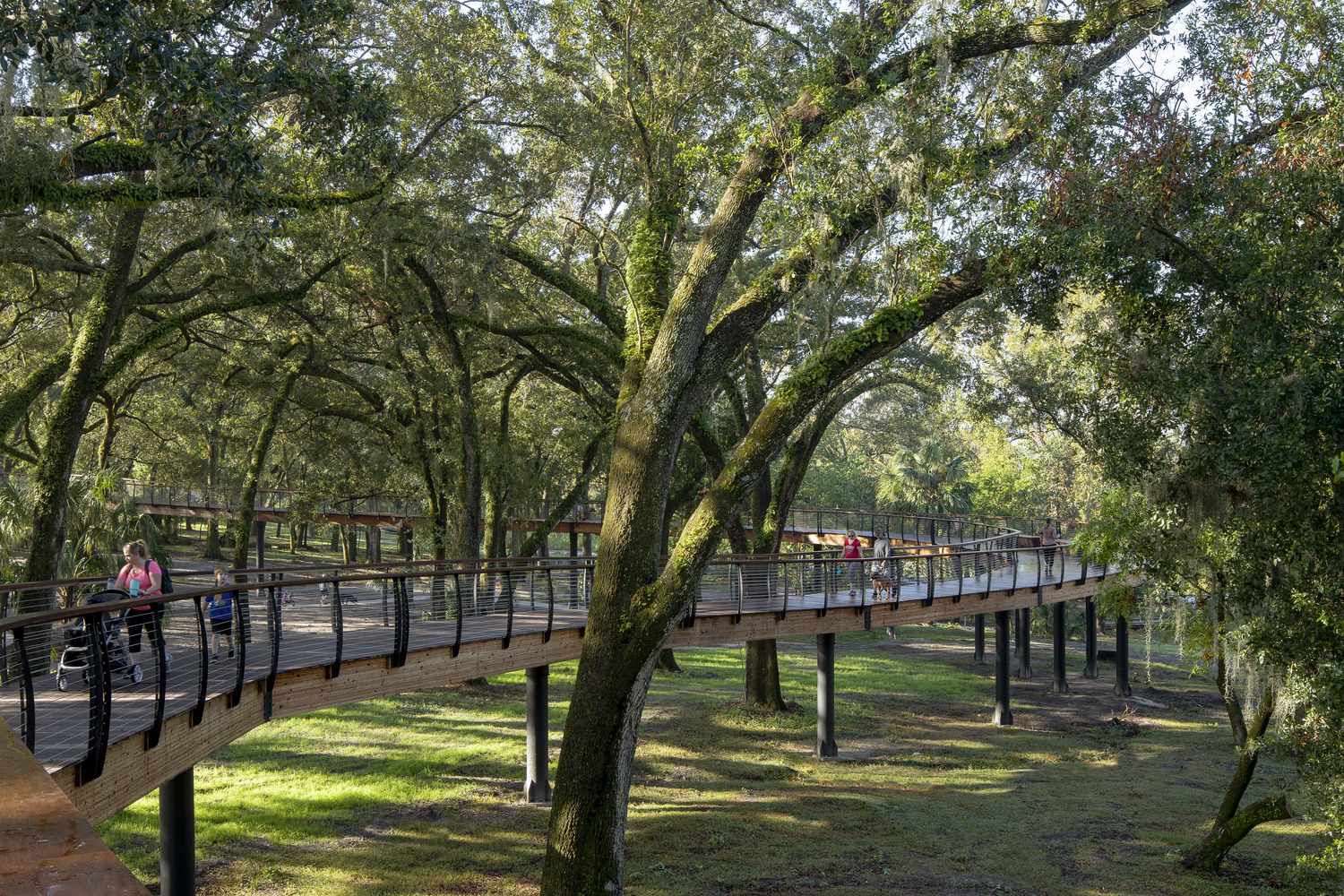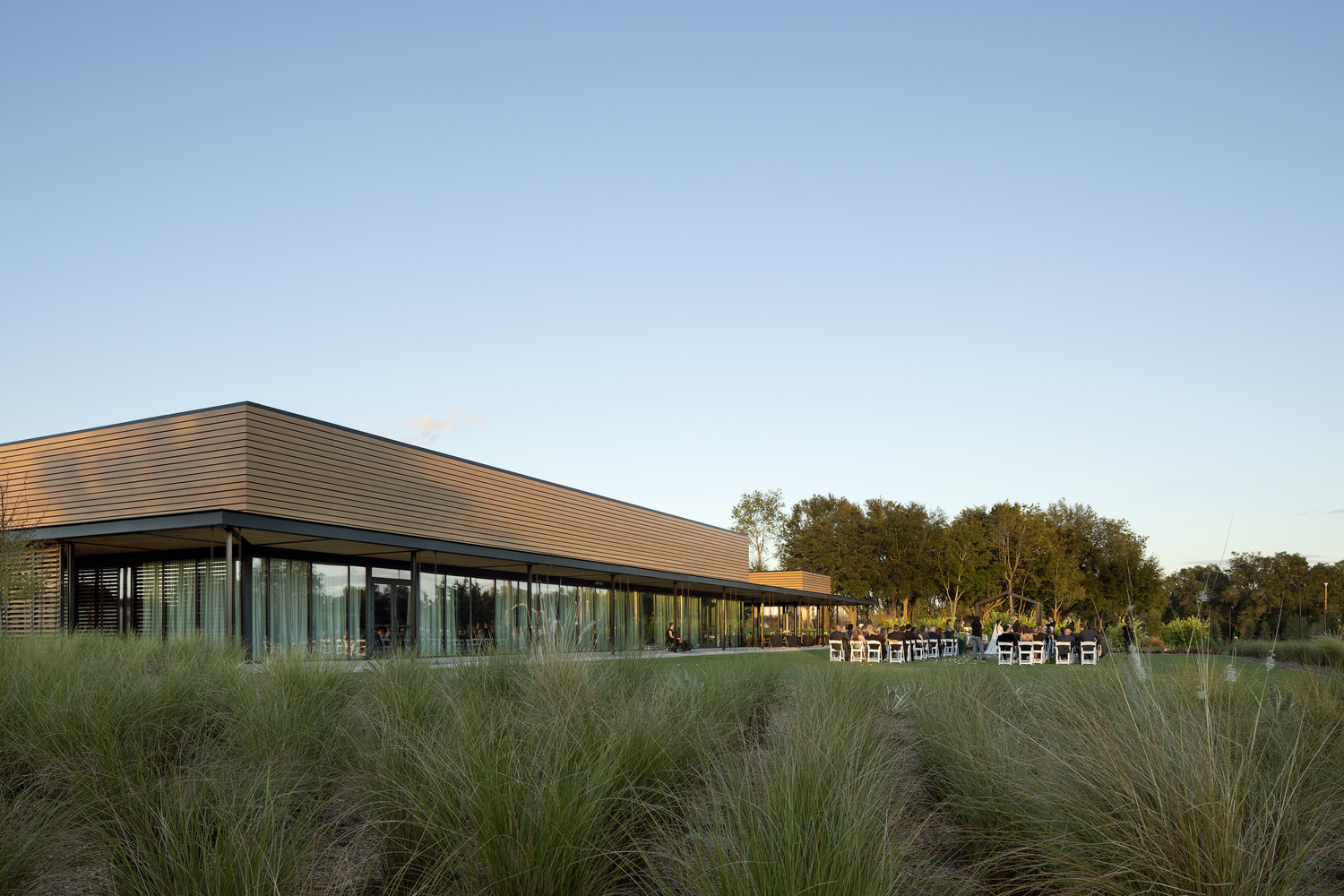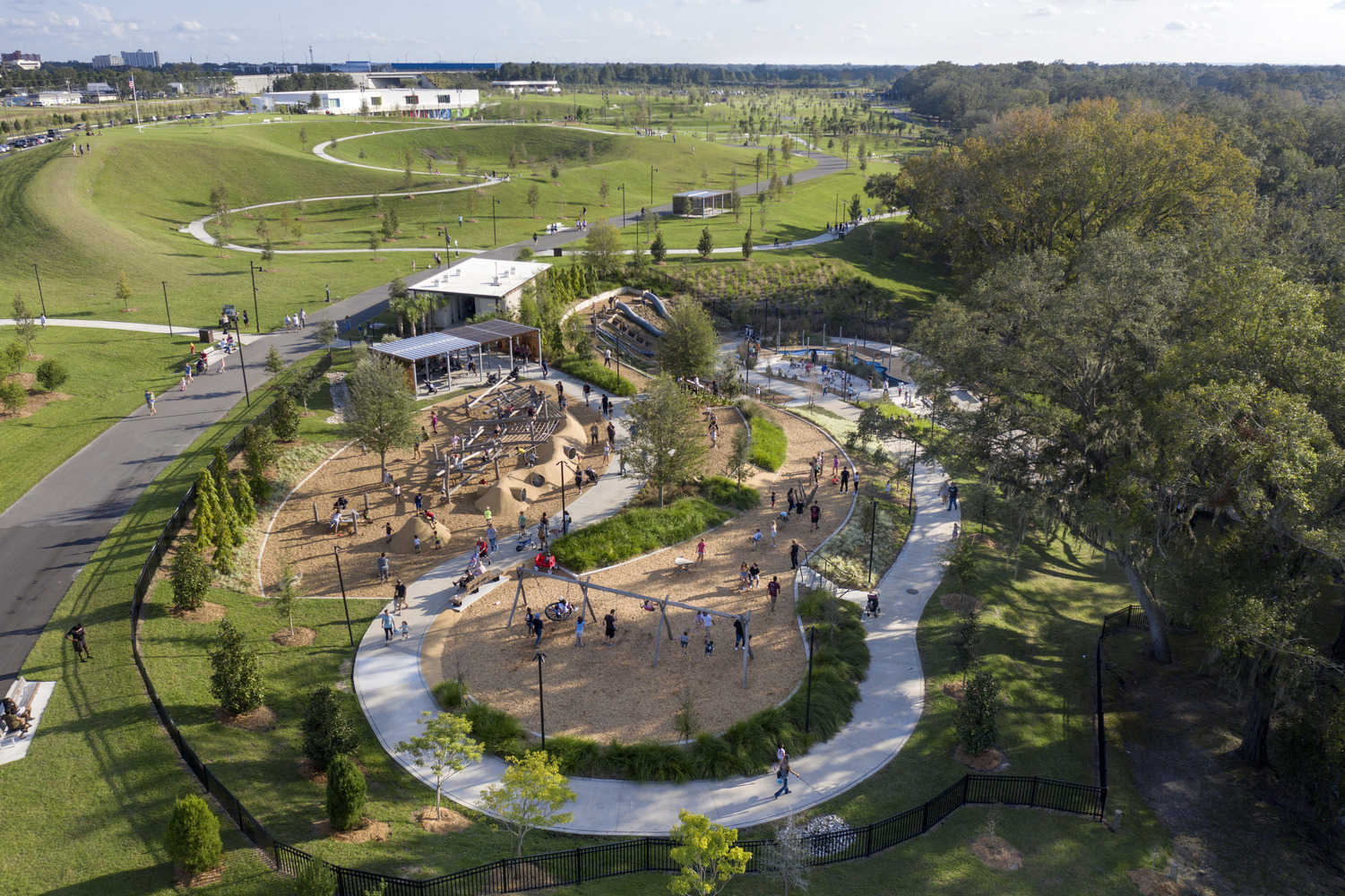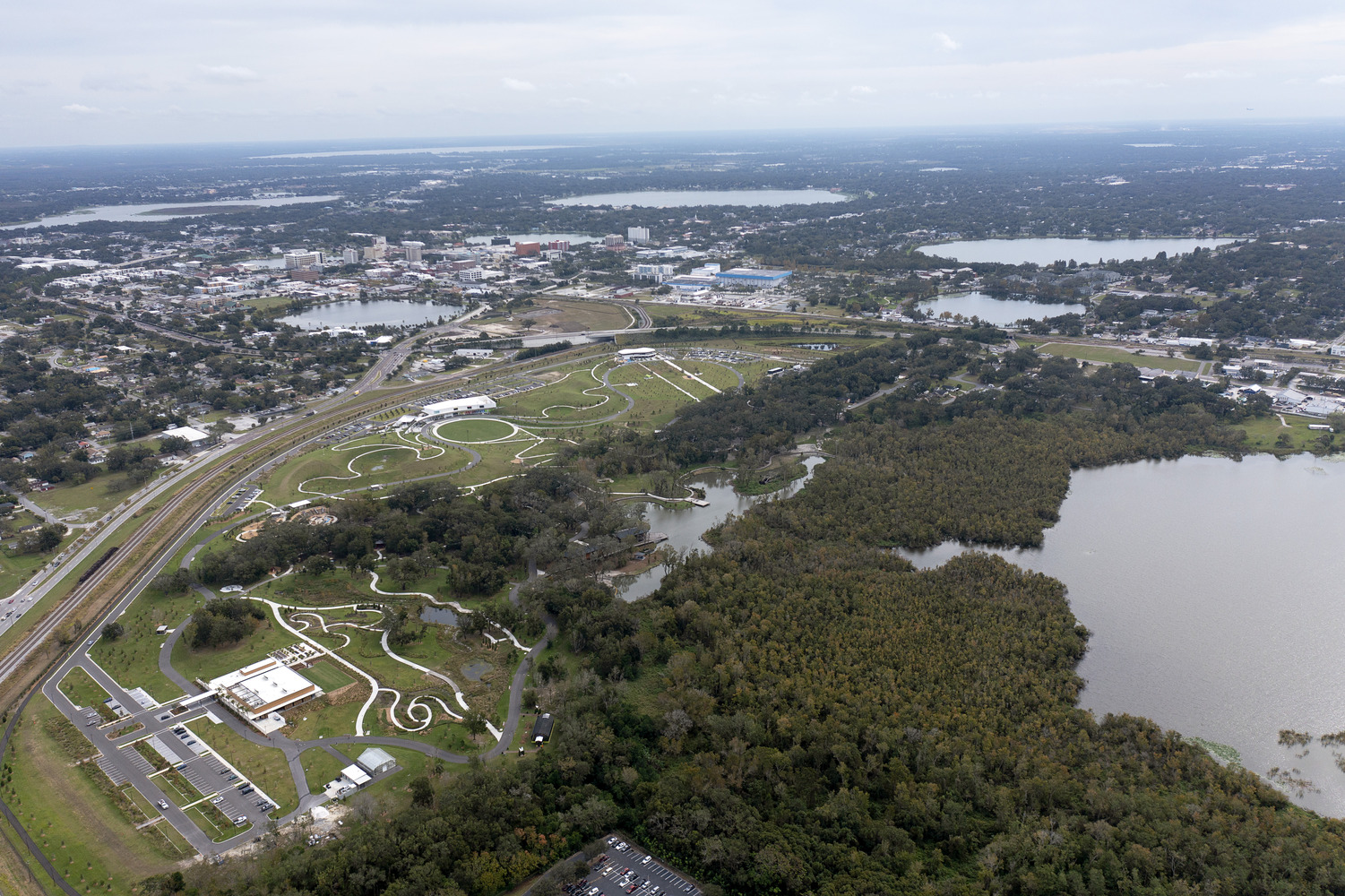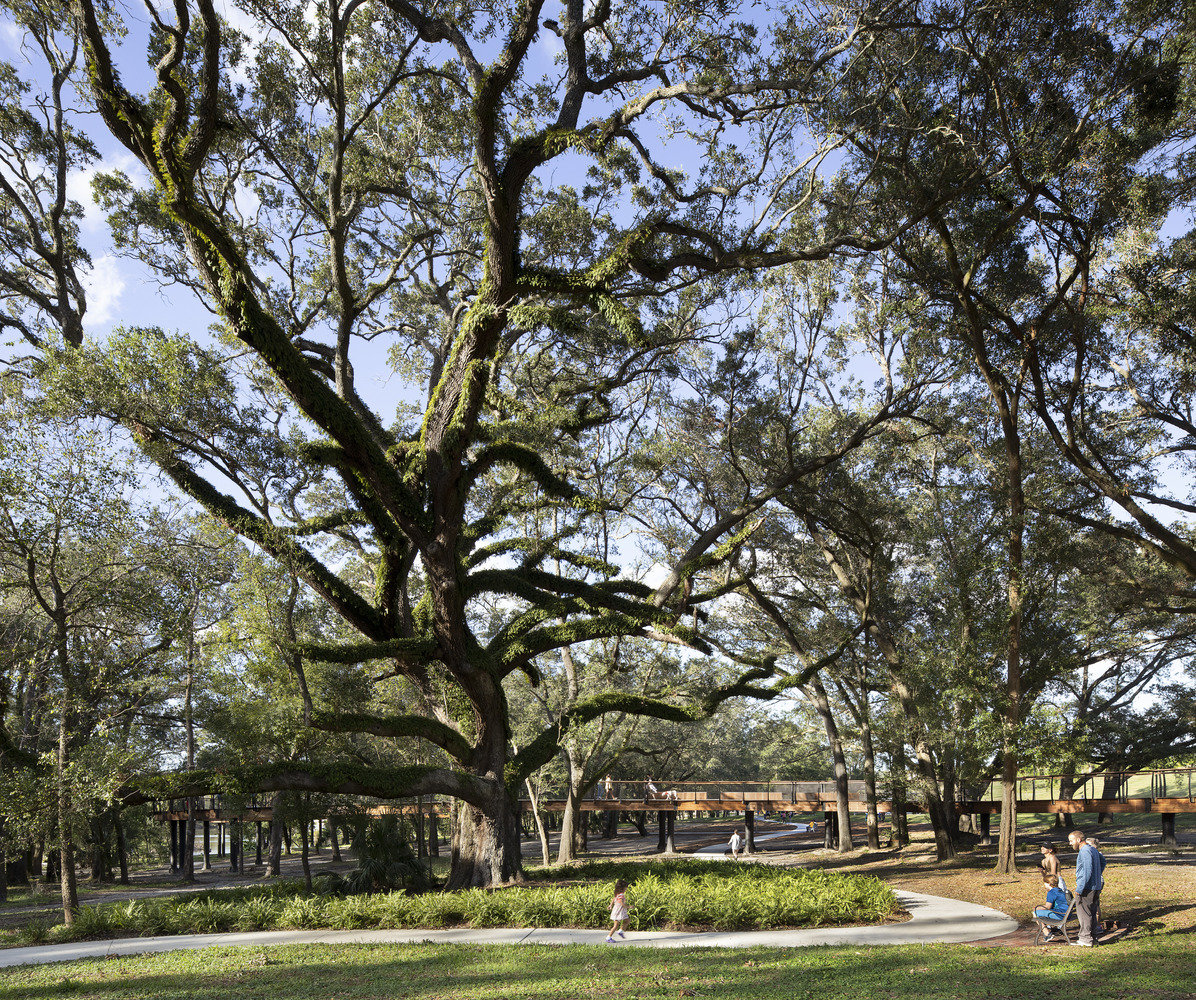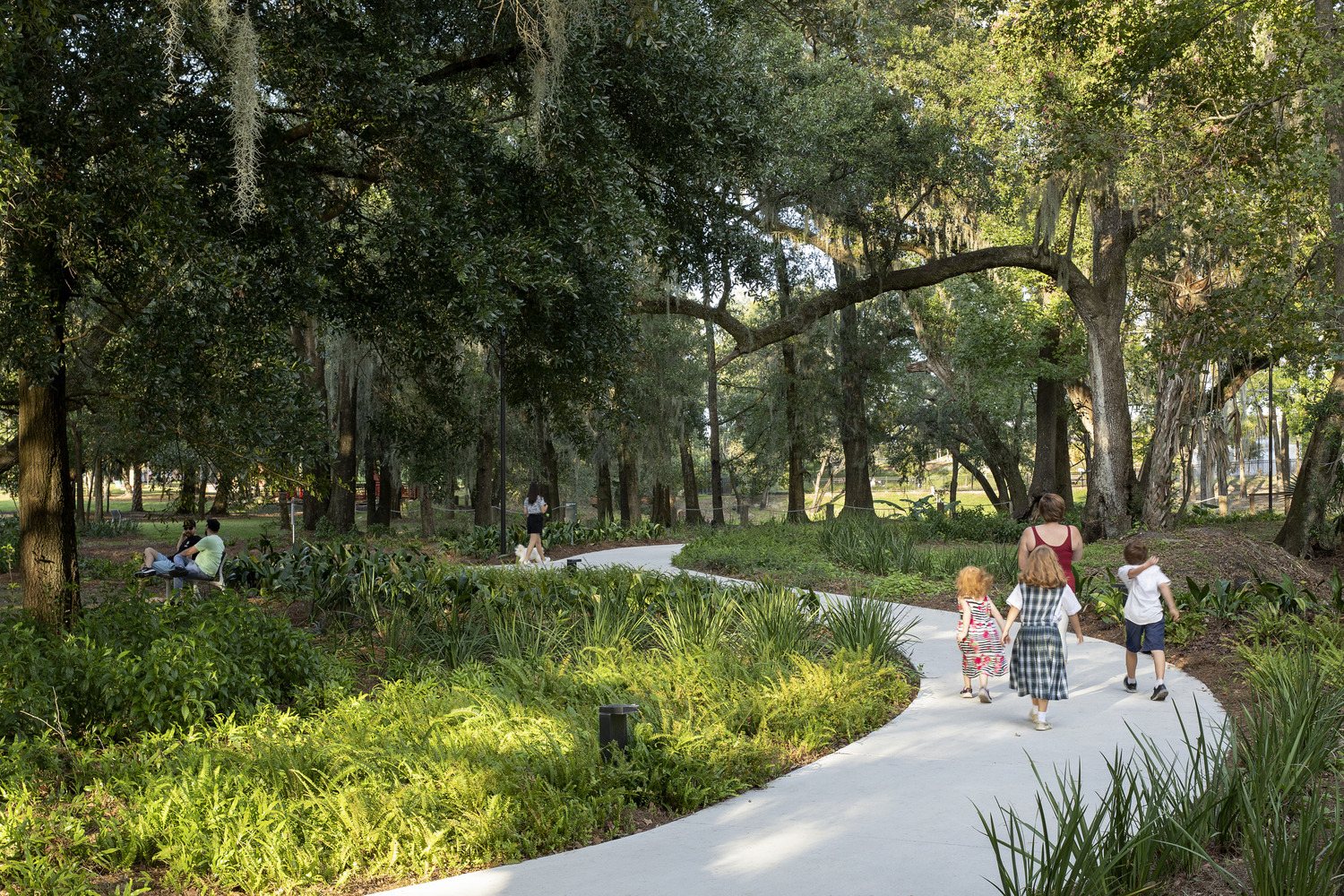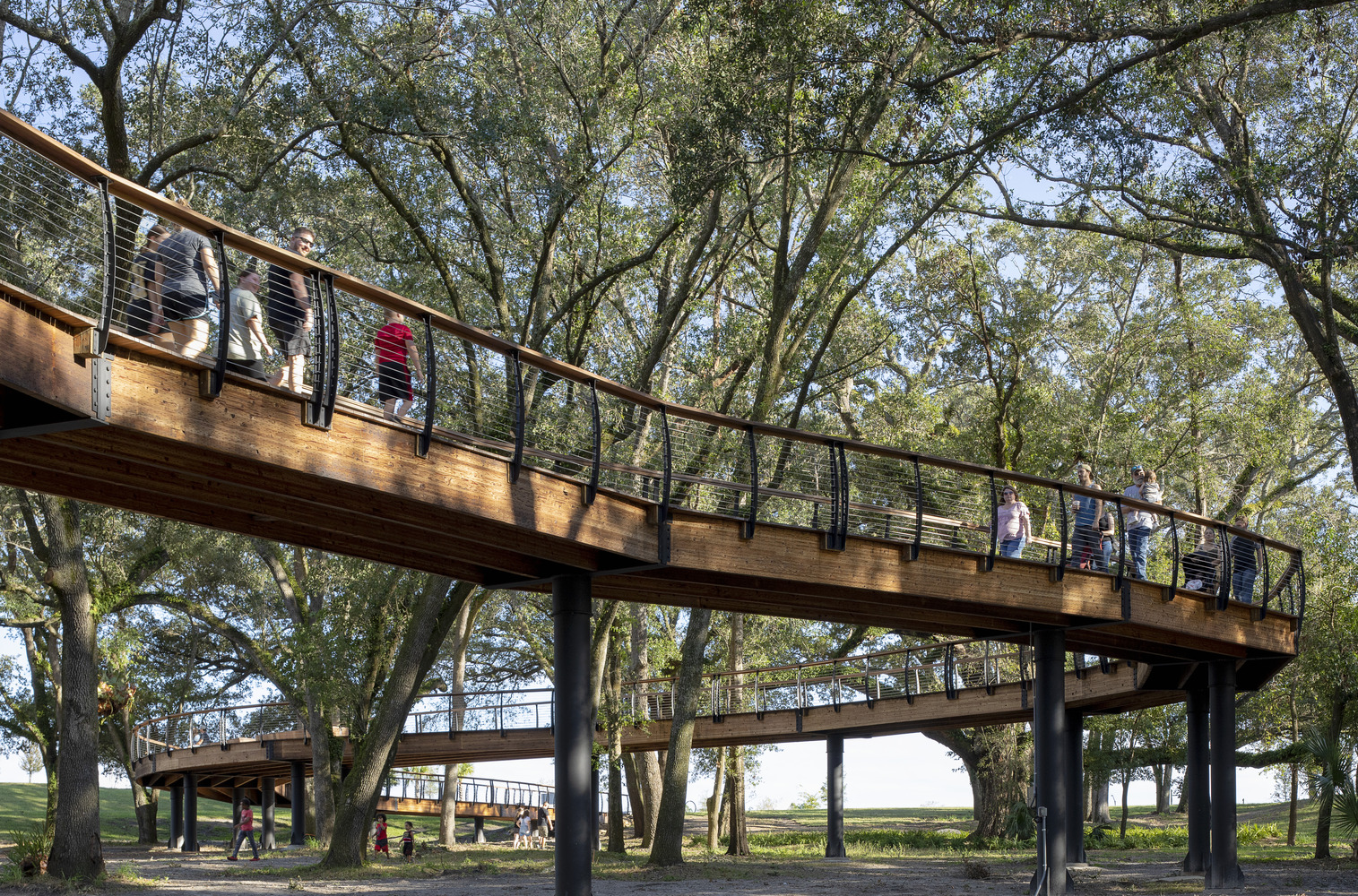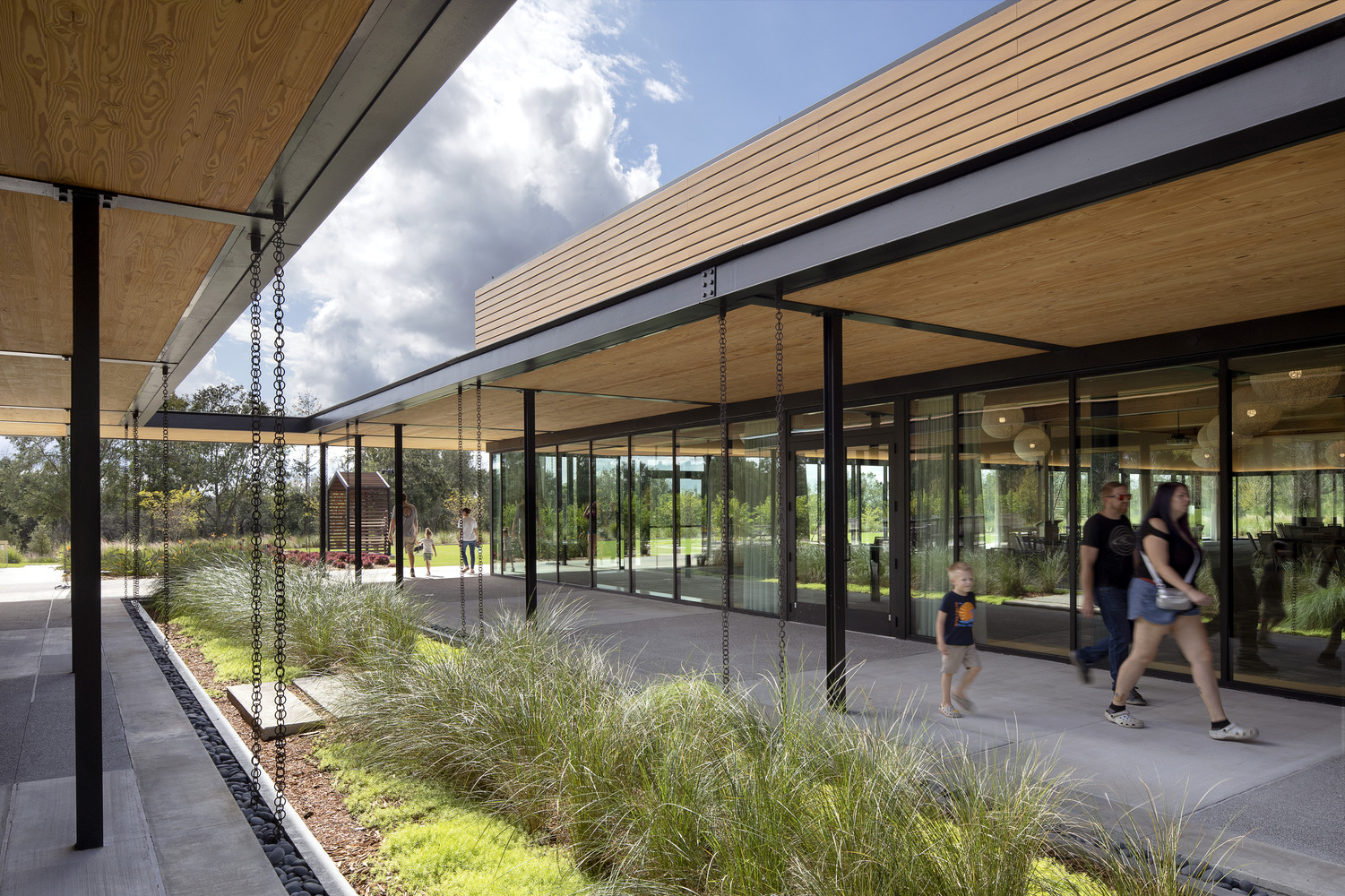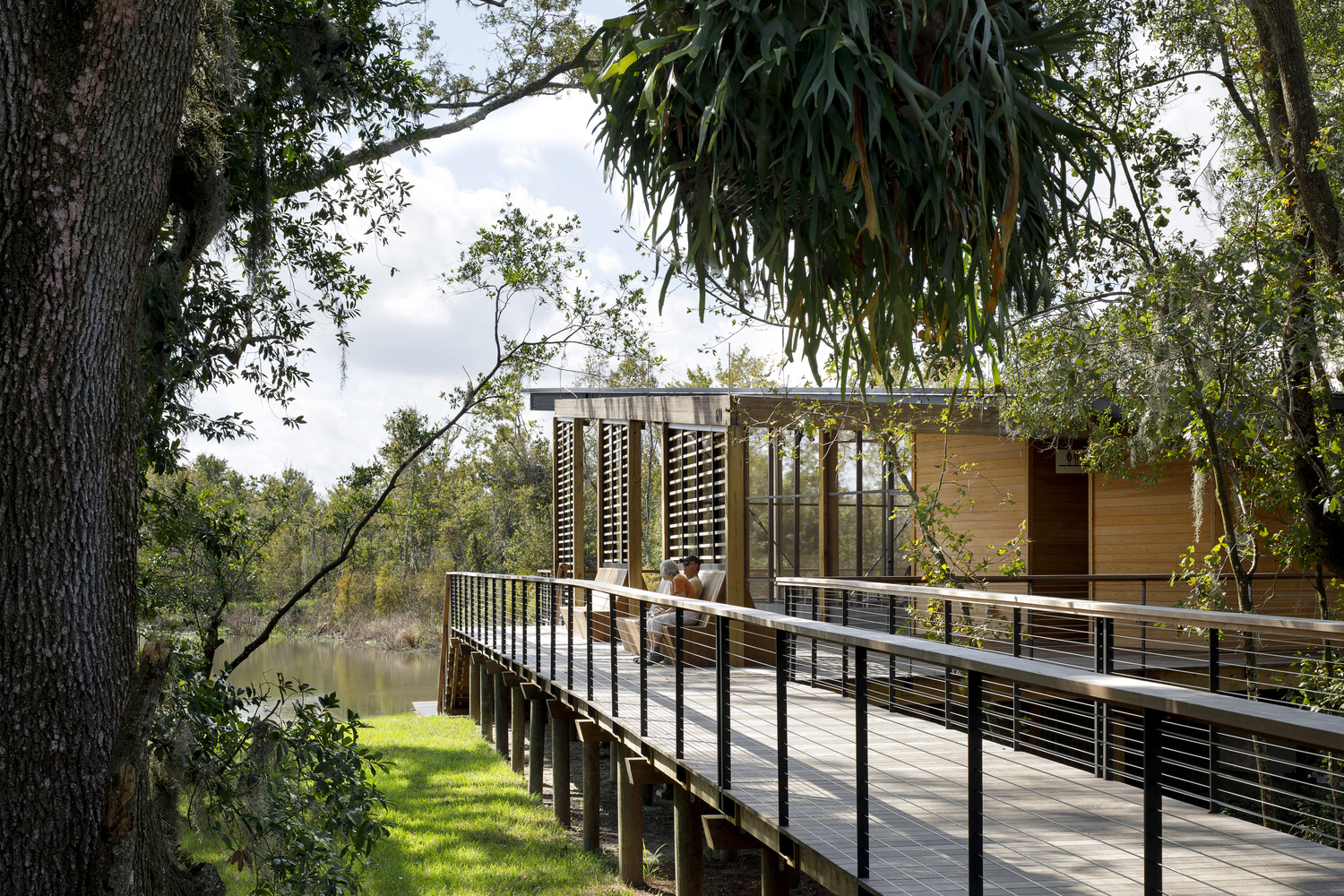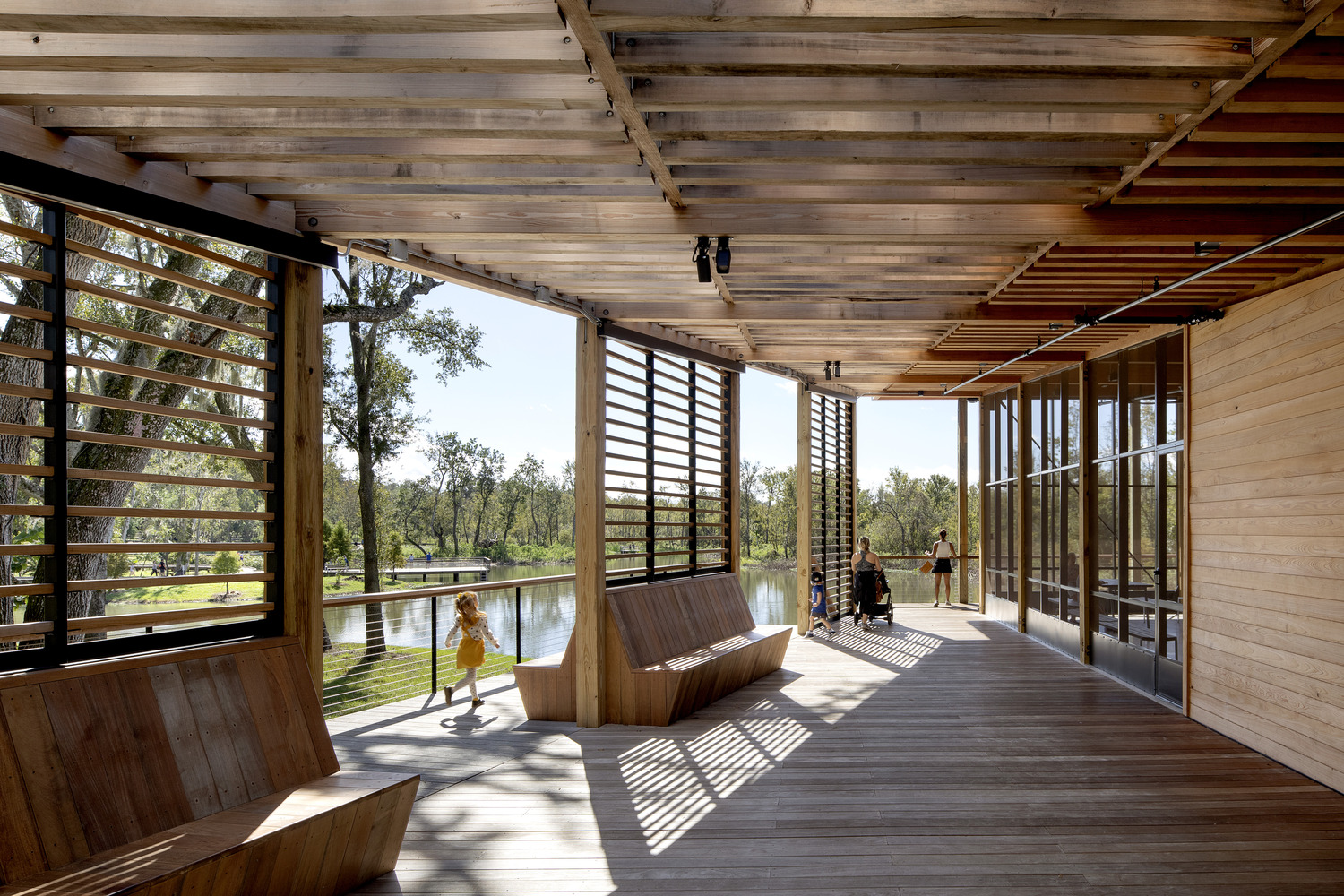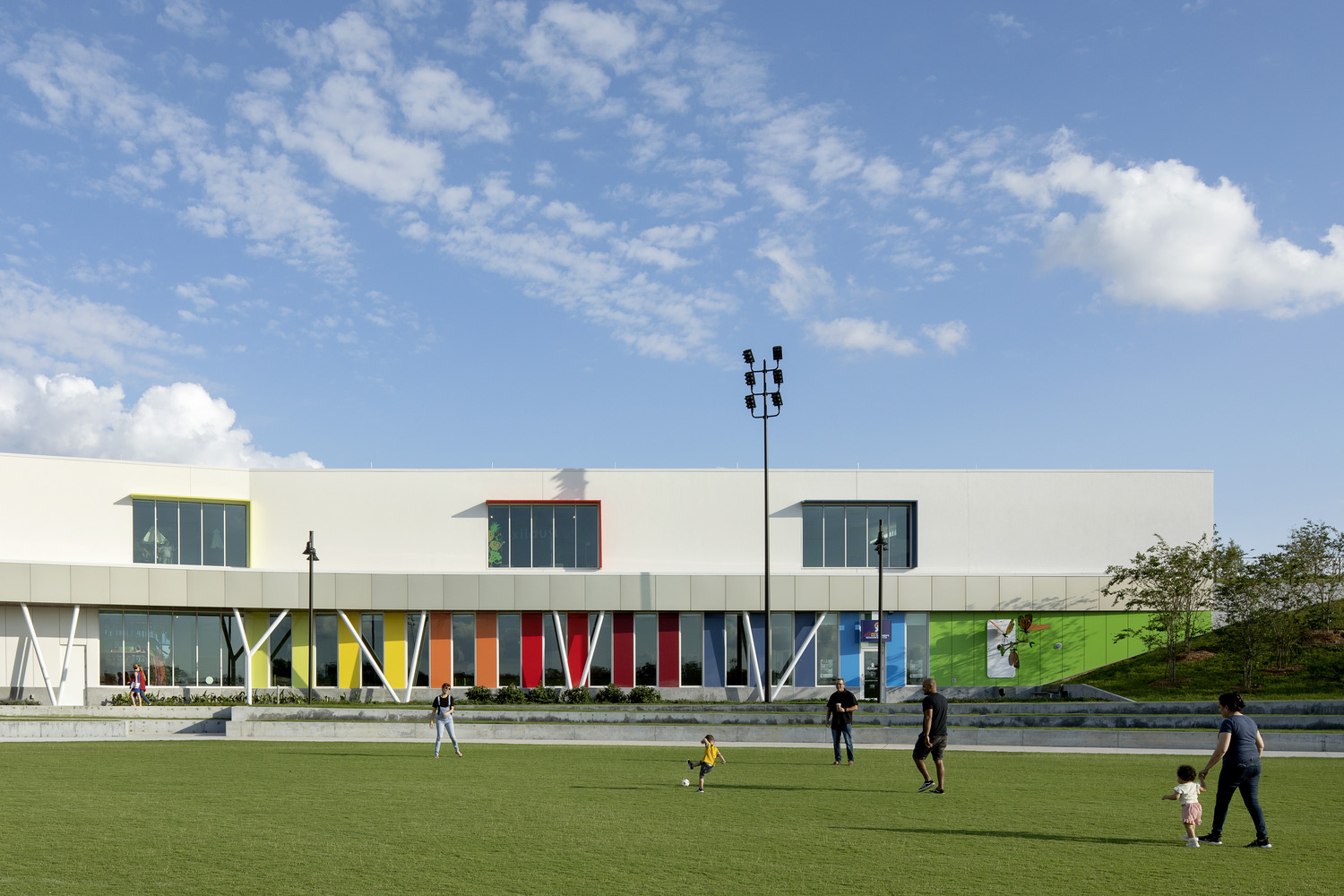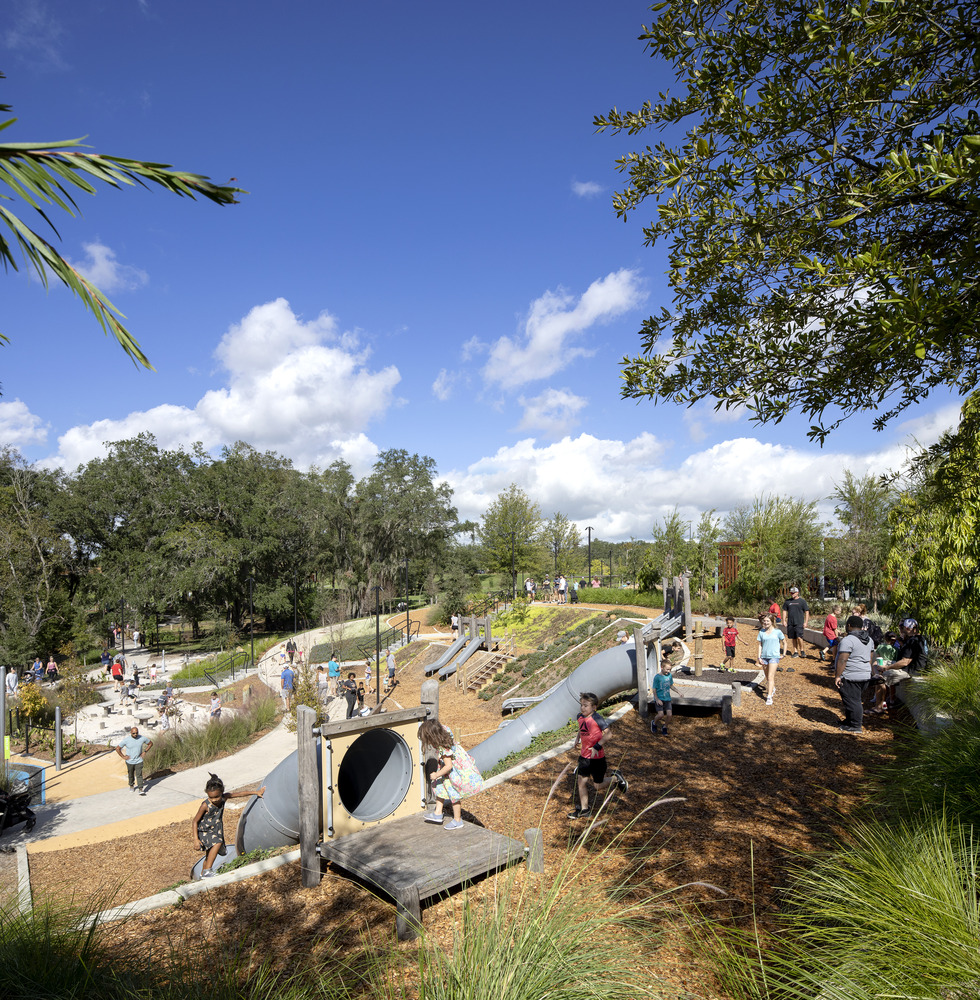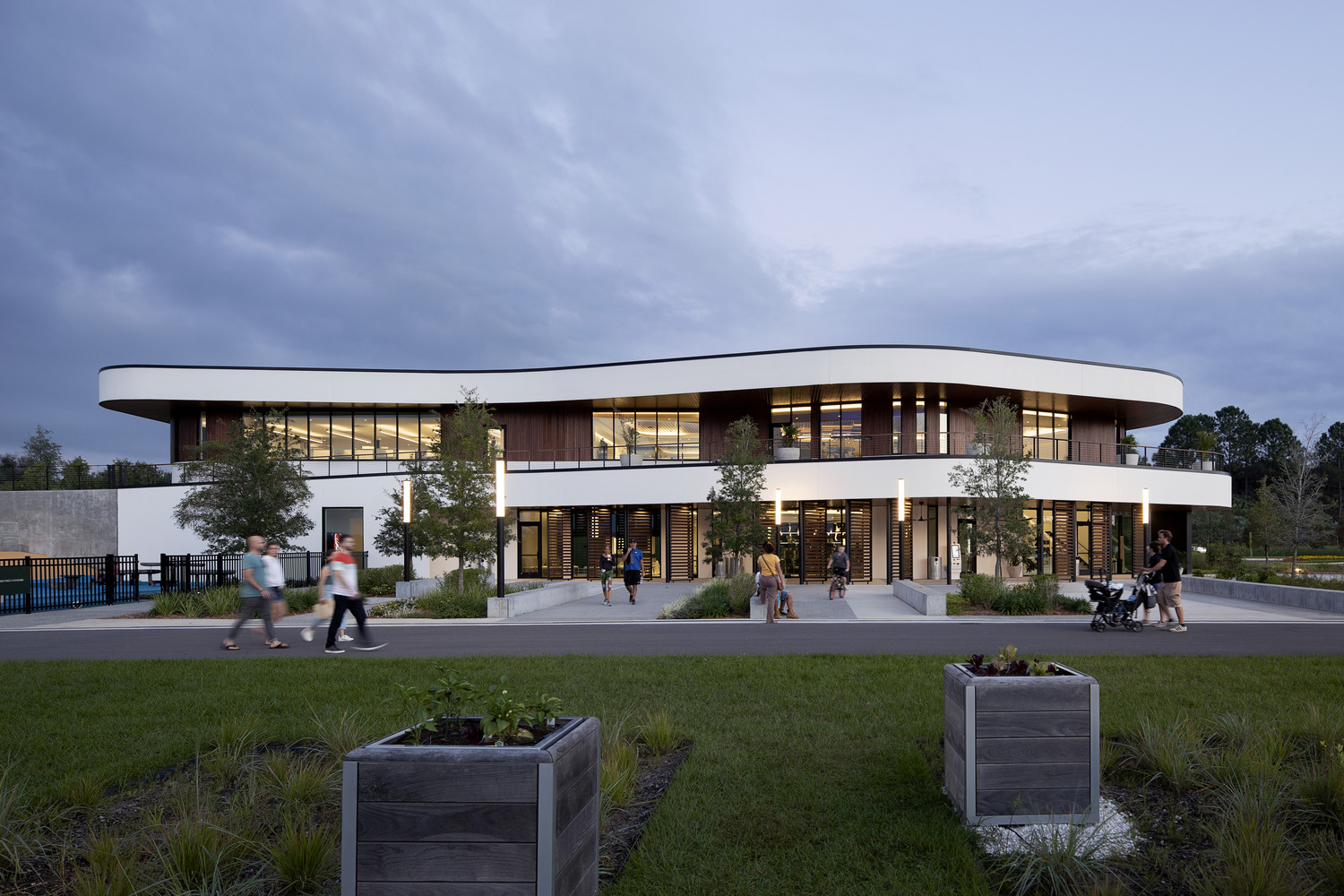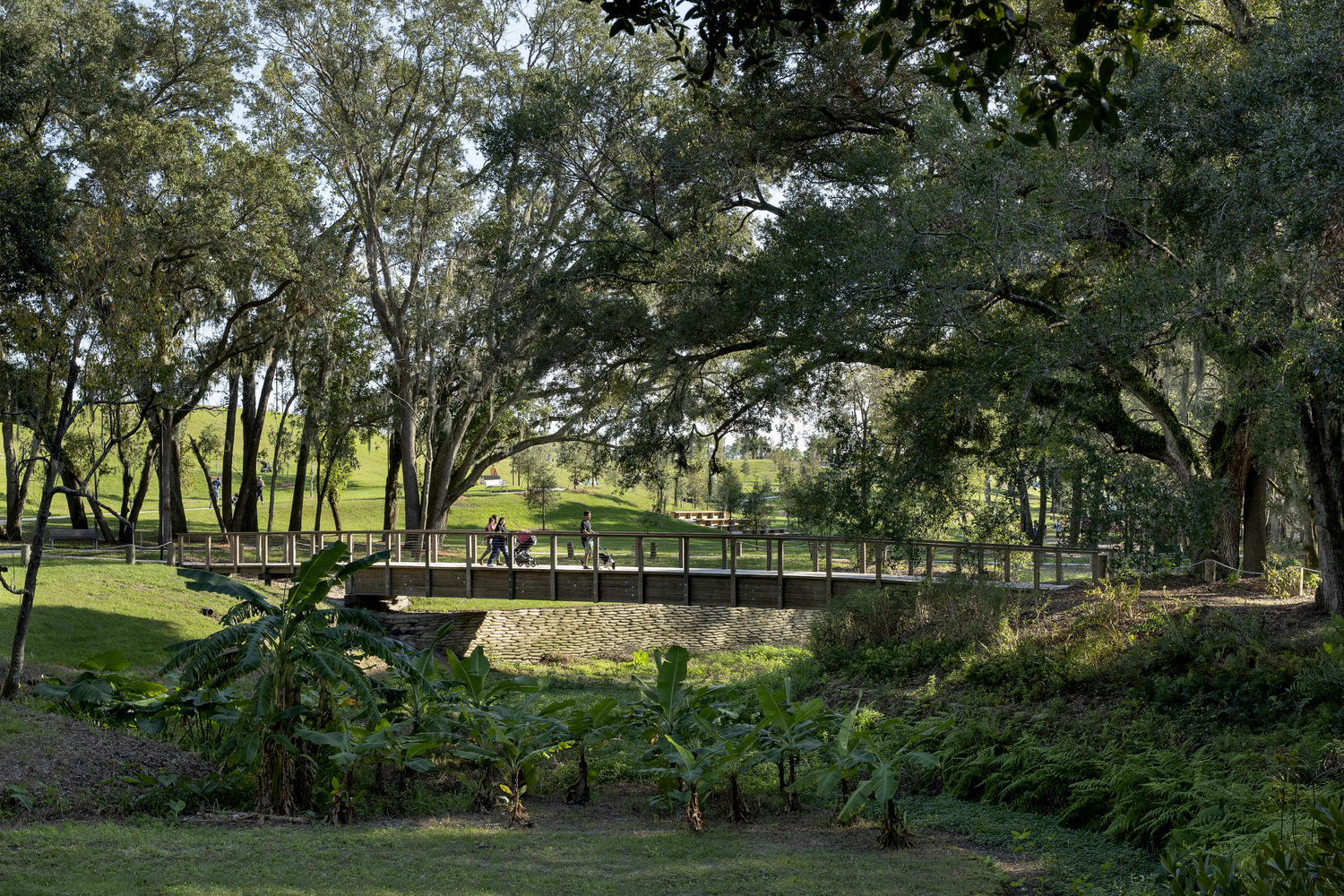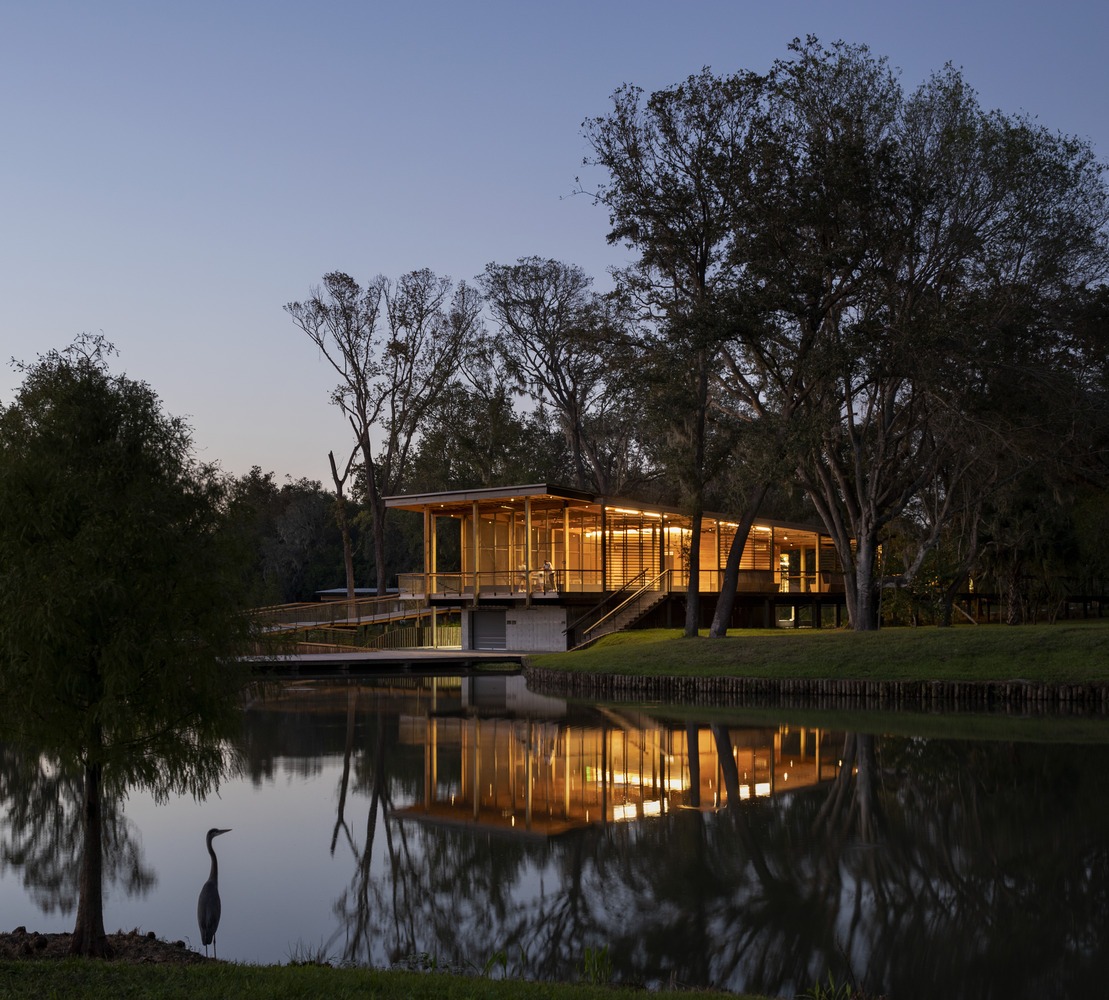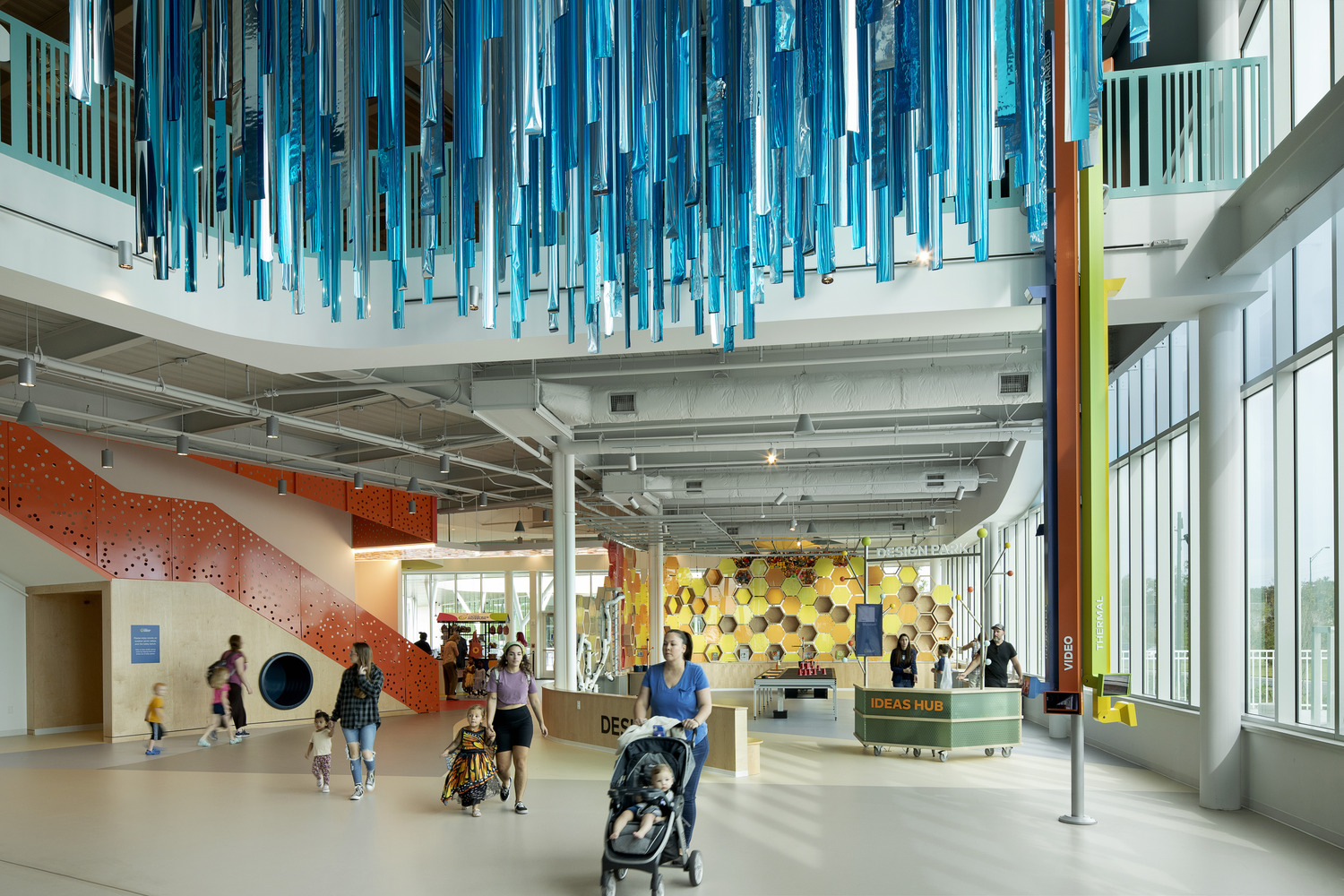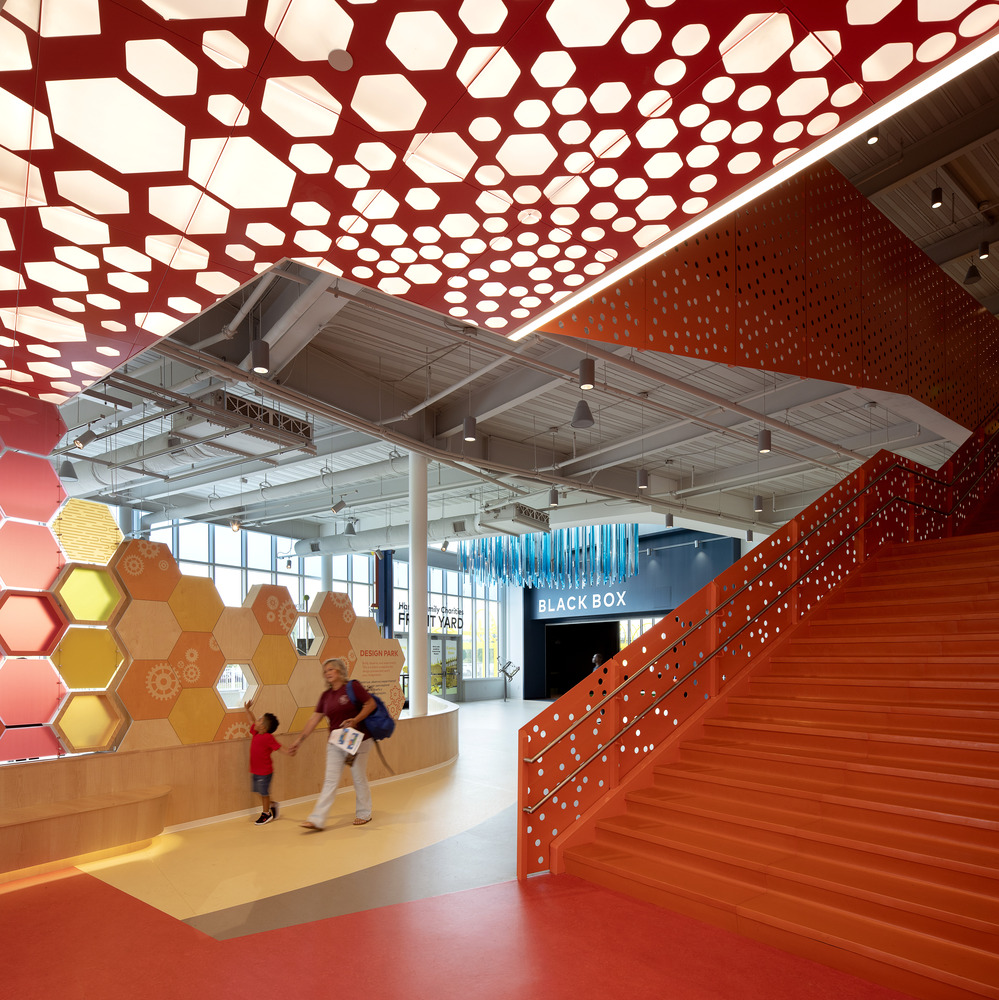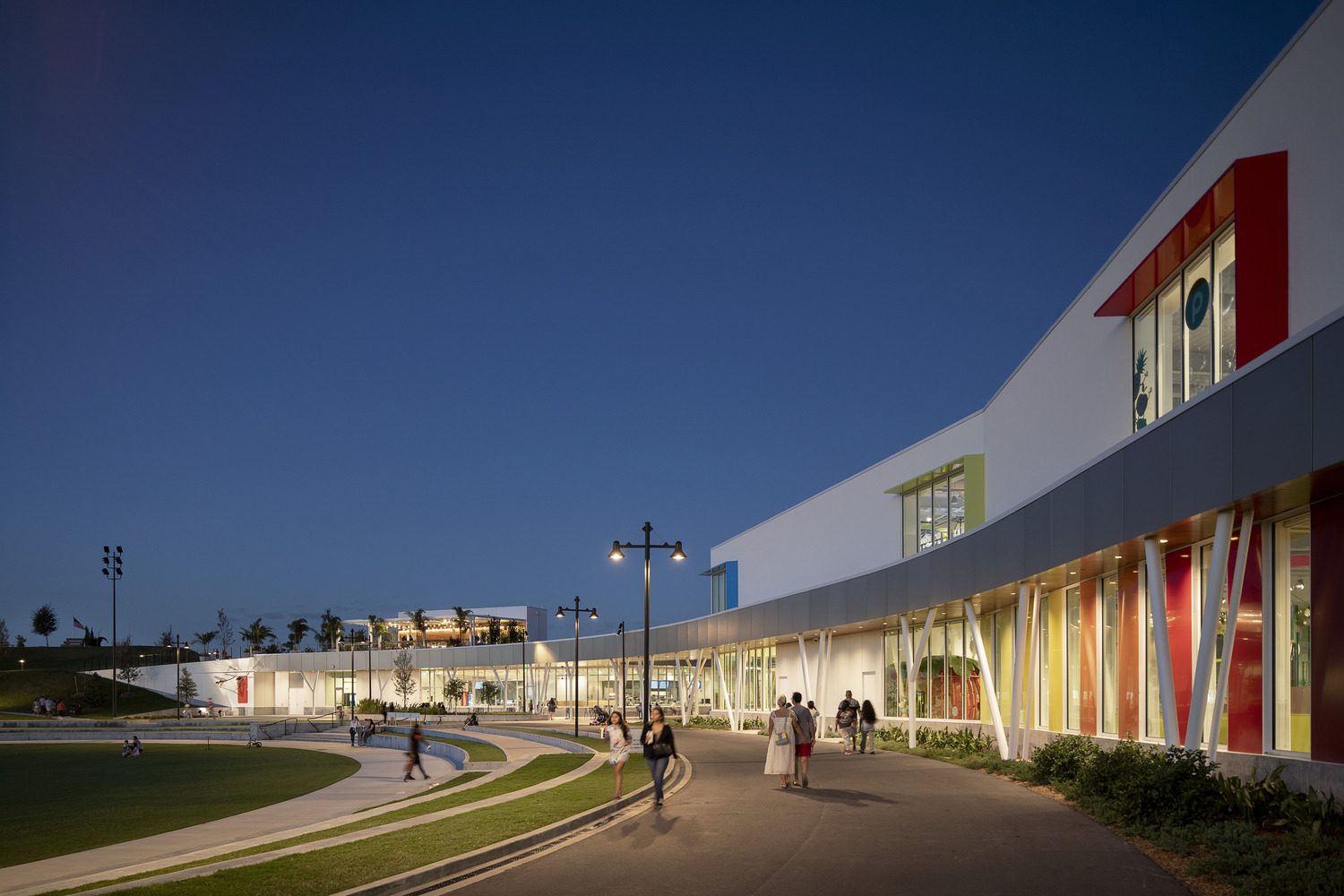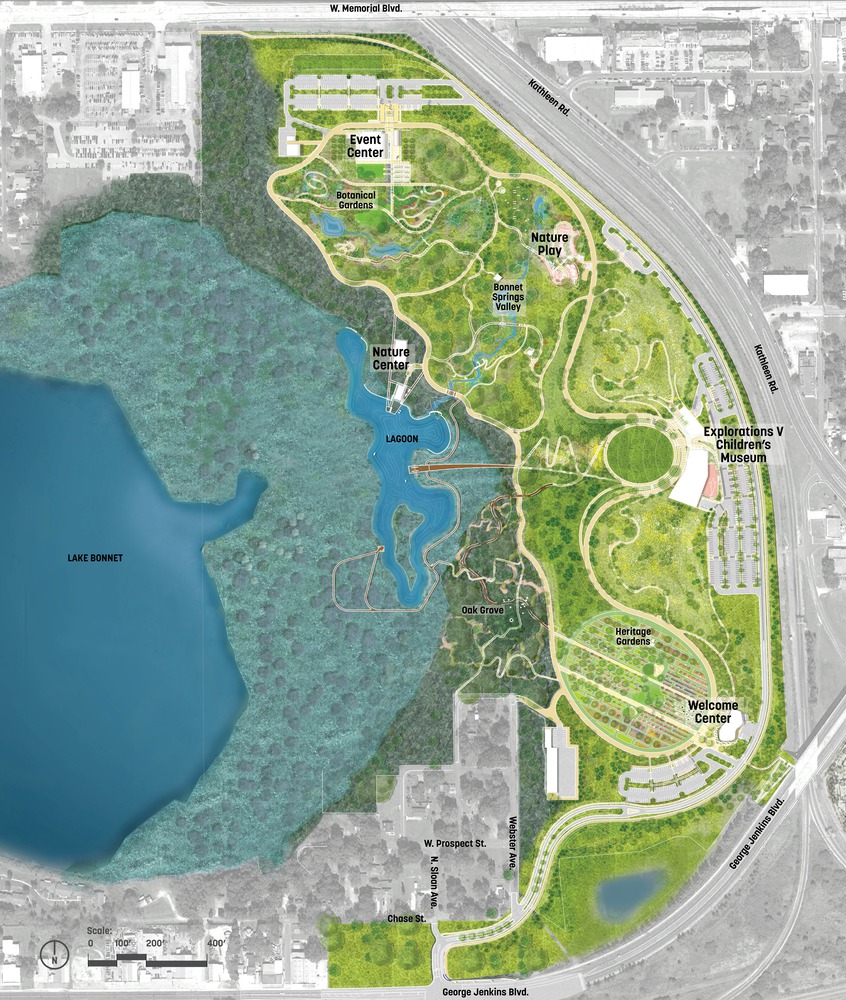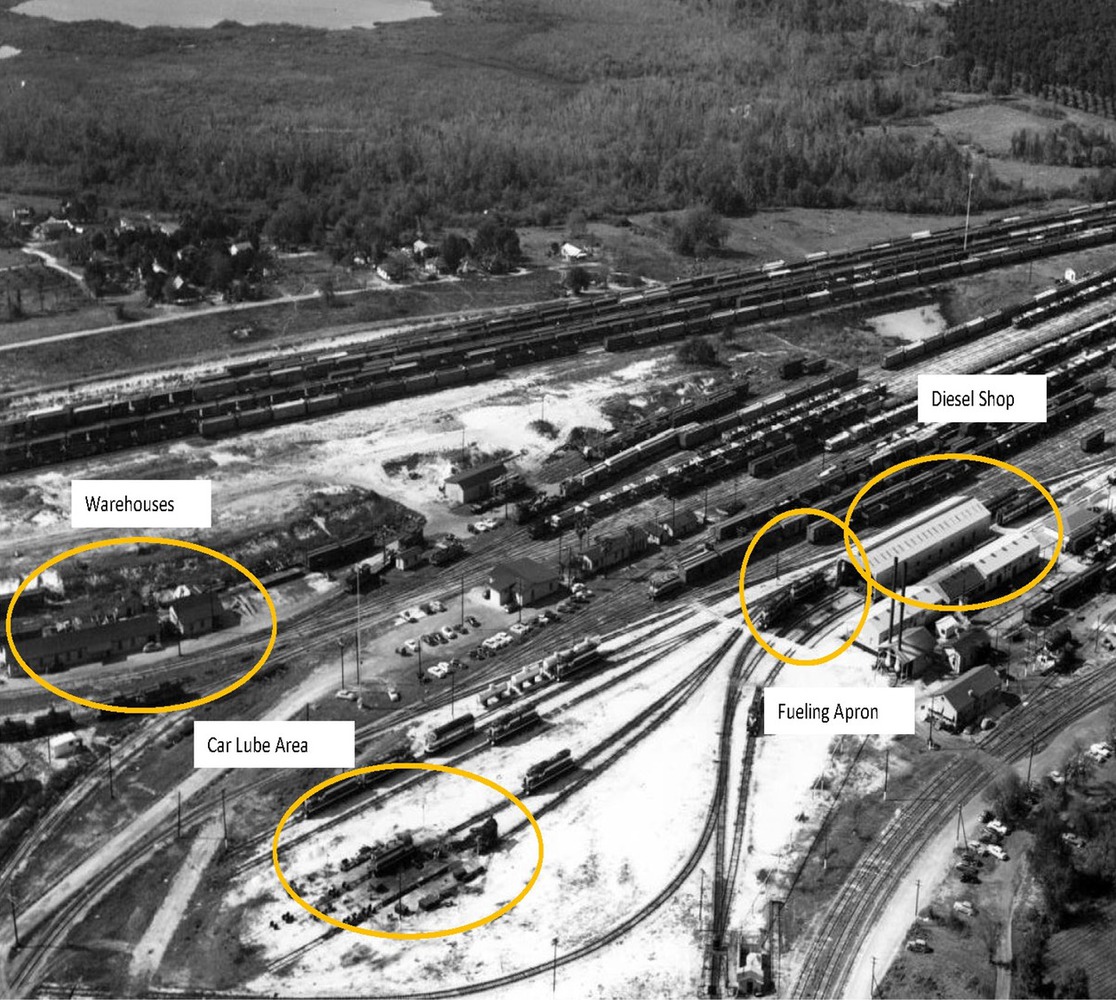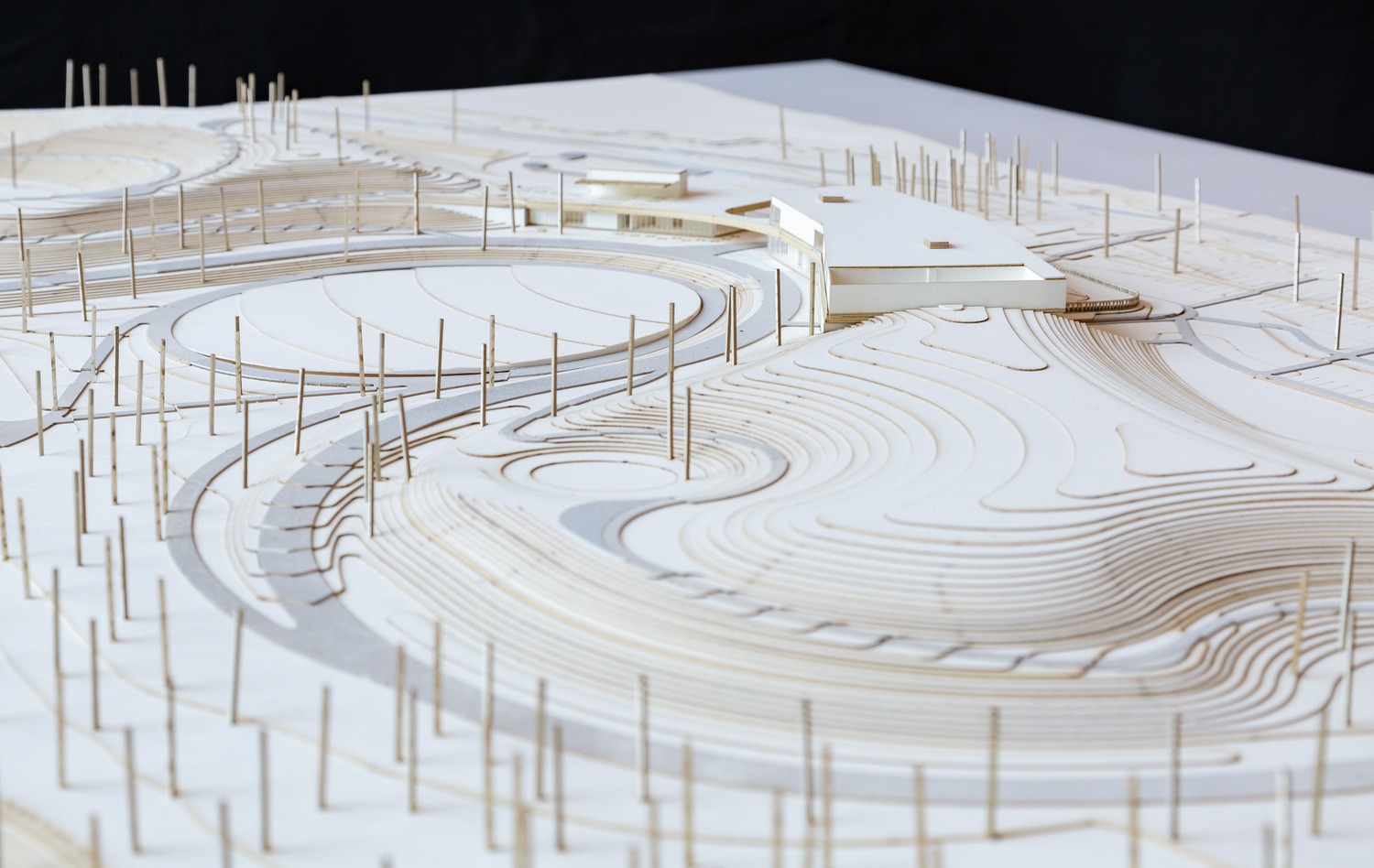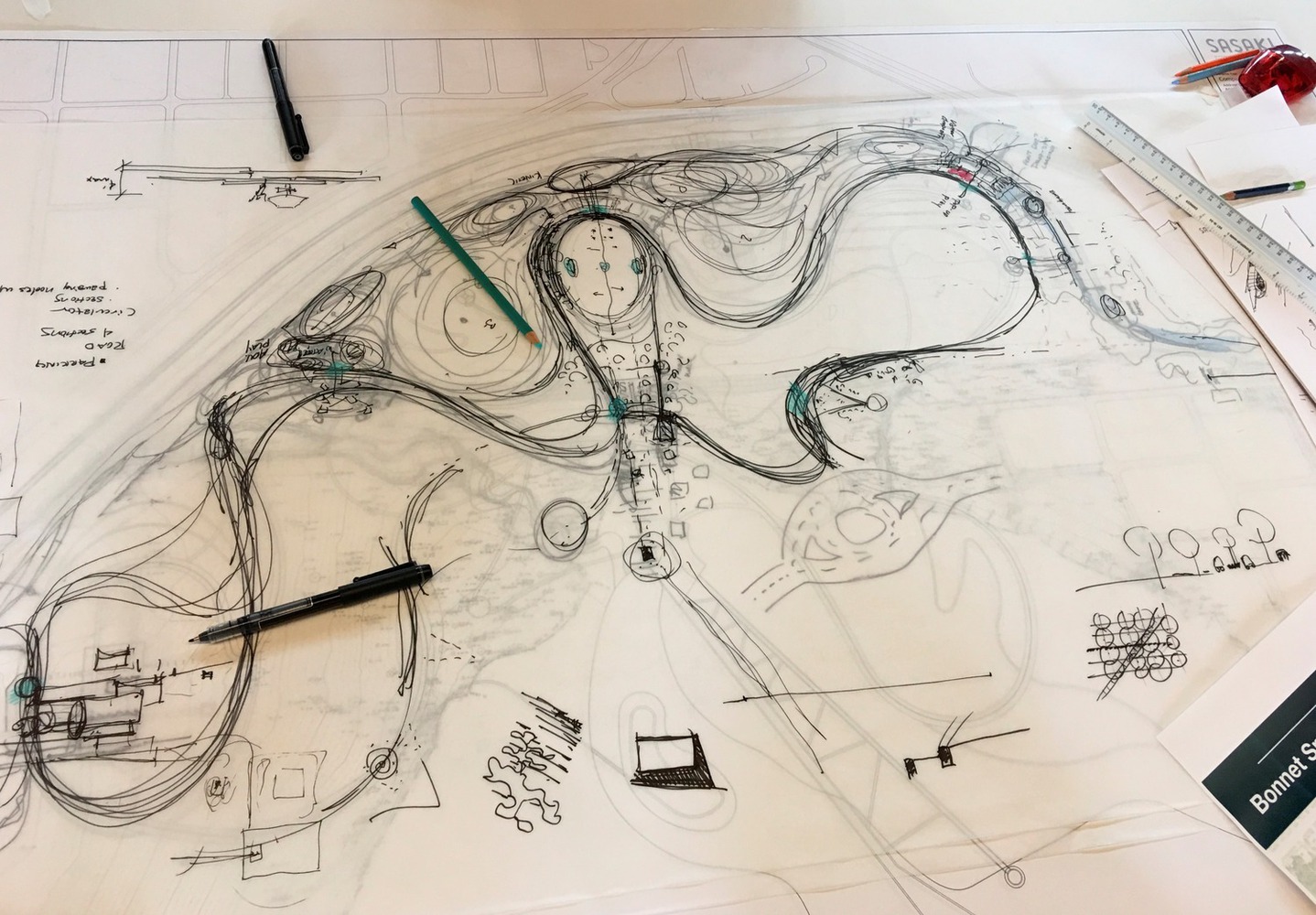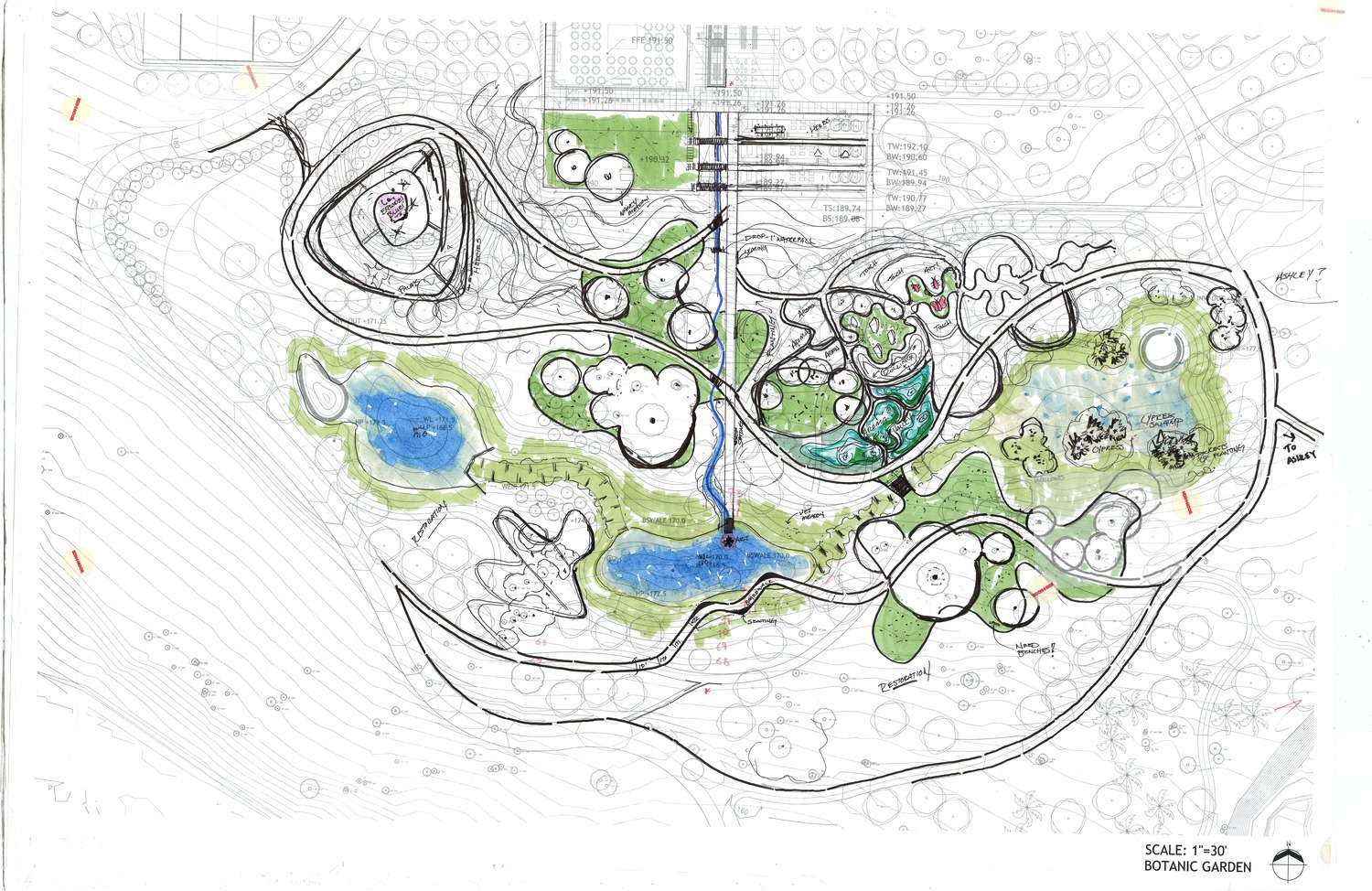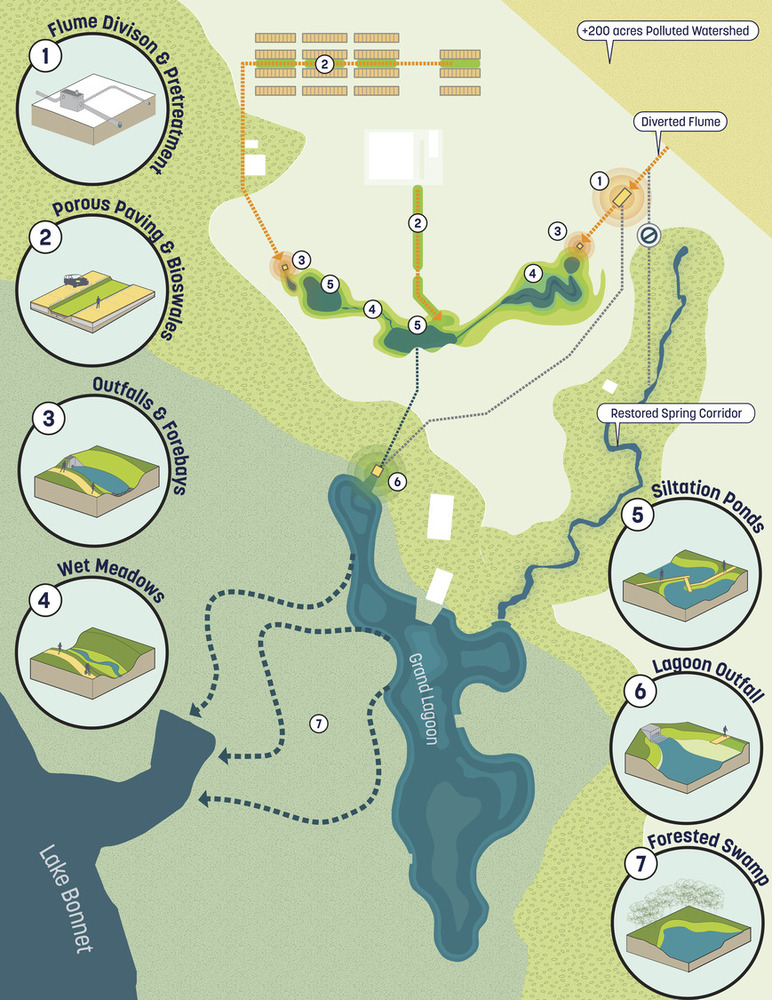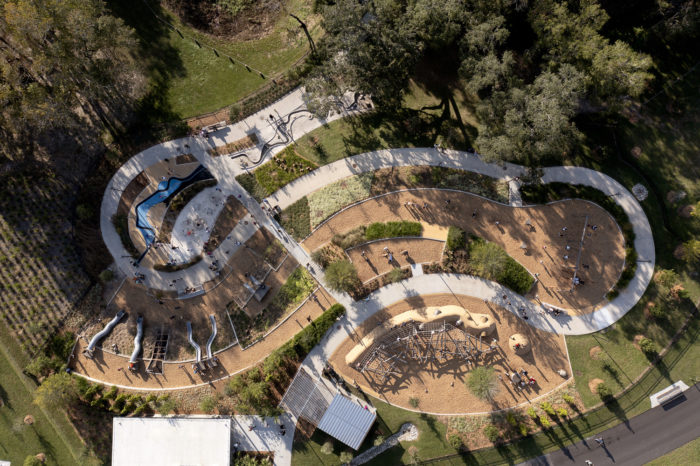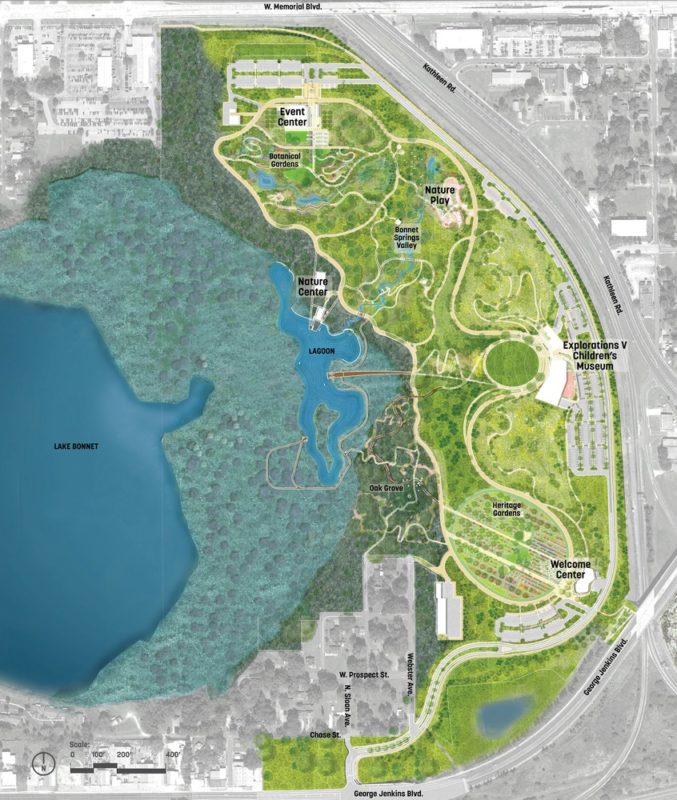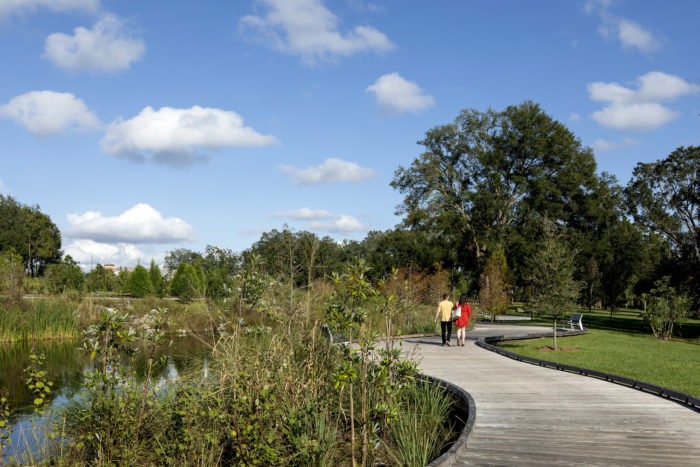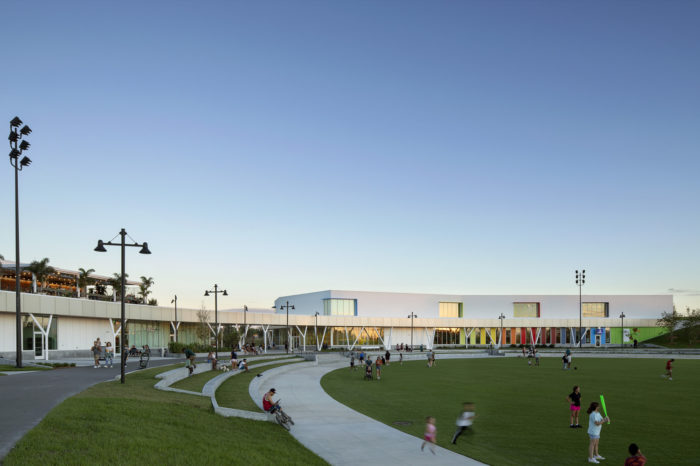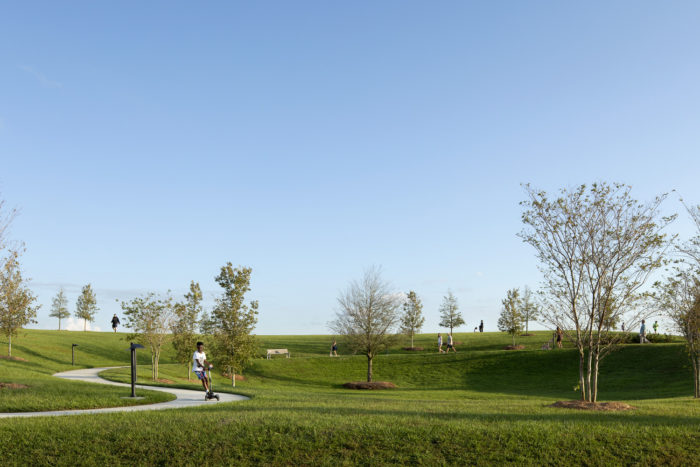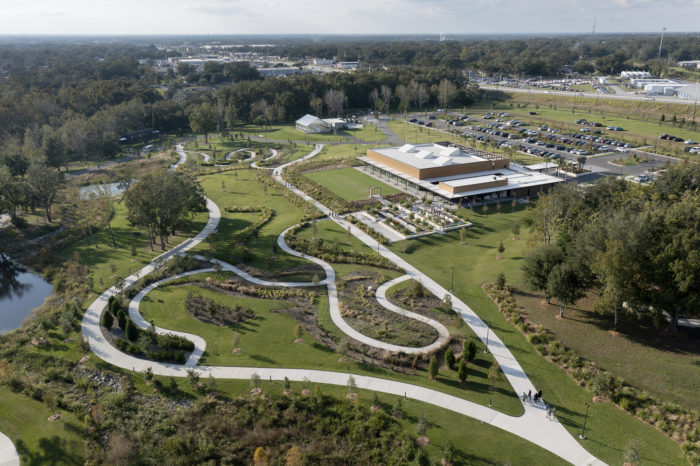The Lakeland Railyard, which operated from 1880 until the early 1950s, was located on the current location of Bonnet Springs Park and was a key center for freight transport along the East Coast. Lake Bonnet has been barely remembered since the railyard closed in 1952.
In 2017, the board of trustees for Bonnet Springs Park contracted Sasaki to develop a comprehensive strategy for the park’s future. The park’s approved design and mission to become an environmental jewel, cultural attraction, and community’s shared property were partly shaped by public feedback gathered by Sasaki over six months of research.
Bonnet Springs Park’s Design Concept
The site’s redevelopment status was a significant element in shaping the design process, as years of industrial usage and ineffective drainage strategies had left some areas devastated. Sasaki’s multidisciplinary team collaborated with a group of local specialists to devise plans for cleaning up the area and bringing back the ecosystem it once had. Restoration measures included clearing the area of exotic invasive plants, creating lakes and green spaces to filter drainage, and covering polluted soil with big hills that provide scenic park vistas.
Protecting and enhancing the area’s mature live oak trees and winding streams is a priority. At Bonnet Springs Park’s epicenter, overlooking Lake Bonnet is a Nature Center where guests can gain insight into central Florida’s unique ecosystems. The Nature Center features a coffee shop, boat rentals, classrooms, and display halls.
The park’s central location allows Lakeland to continue its legacy as an anchor to illustrious cultural and educational associations and strengthen its dedication to artistic endeavors. For example, the Florida Children’s Museum has moved to a more extensive building in the park’s center and is actively involved in creating the park’s educational and cultural programs.
The park’s enormous botanic garden and its incorporation of permanent and temporary works of art complement the Welcome Center’s instructional exhibitions, focusing on the region’s agricultural, industrial, and artistic heritage.
Bonnet Springs Park is a community hub that brings people of varying ages and walks of life together by bridging a gap in the urban fabric and transportation systems. The park is now reachable from all over, thanks to newly constructed cycling and walking routes, friendly entrances, and the inclusion of public transportation.
Park amenities like the Event Center’s spacious banquet hall, the Welcome Center’s equipped eatery, and the central event field for performances and events all contribute to the park’s role as an area for socialization. The park’s smaller meeting areas, such as the tea house, the natural playground, and the tree house, help bring visitors closer to the park’s everyday charm. Bonnet Springs Park’s many offerings promote health and social inclusion for all visitors, helping to solidify common ground and create opportunities for new friendships in a dynamic neighborhood.
Project Info:
- Architects: Sasaki
- Area: 168 m²
- Year: 2022
- Photographs: Jeremy Bittermann
- Lead Architects: Anna Cawrse, Andrew Gutterman
- City: Lakeland
- Country: United States
